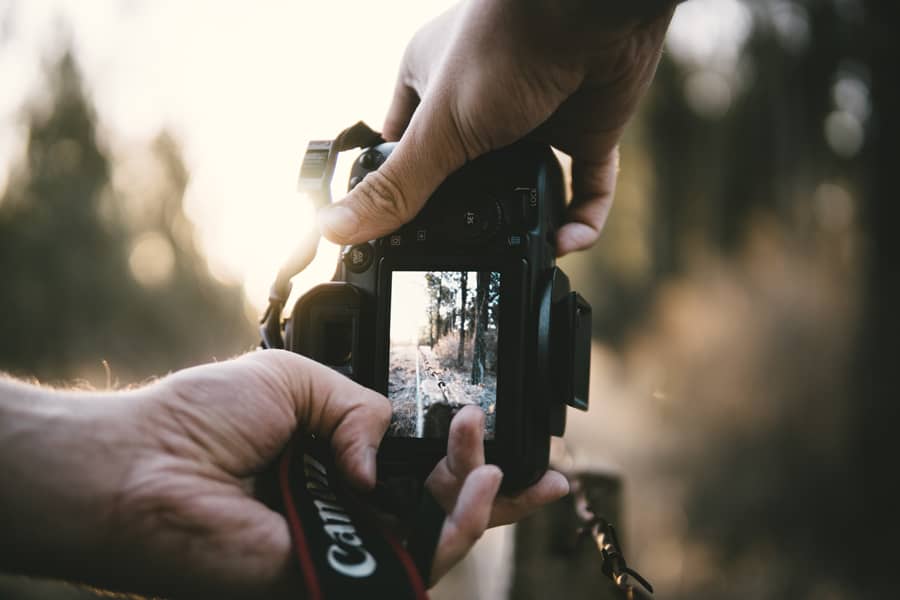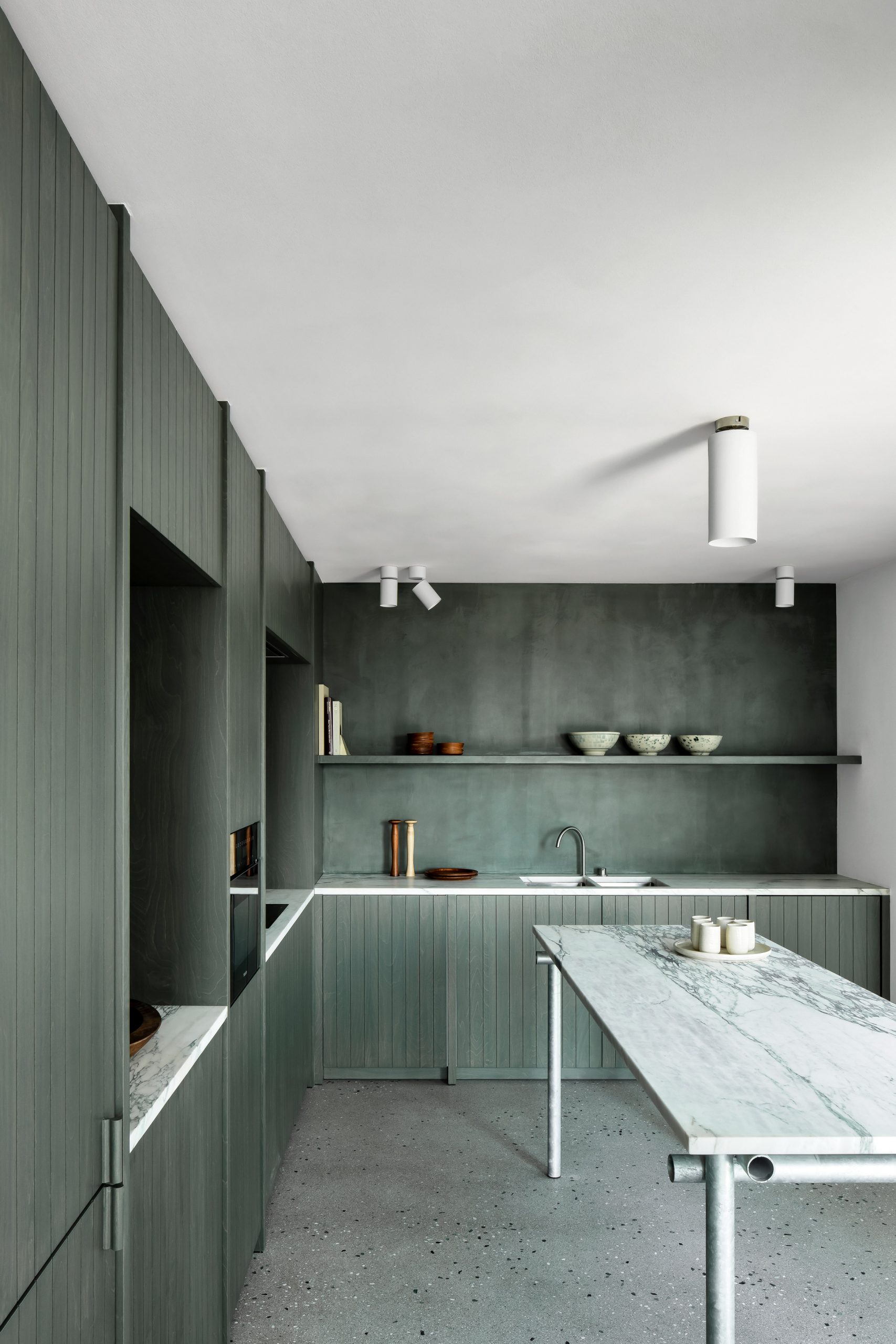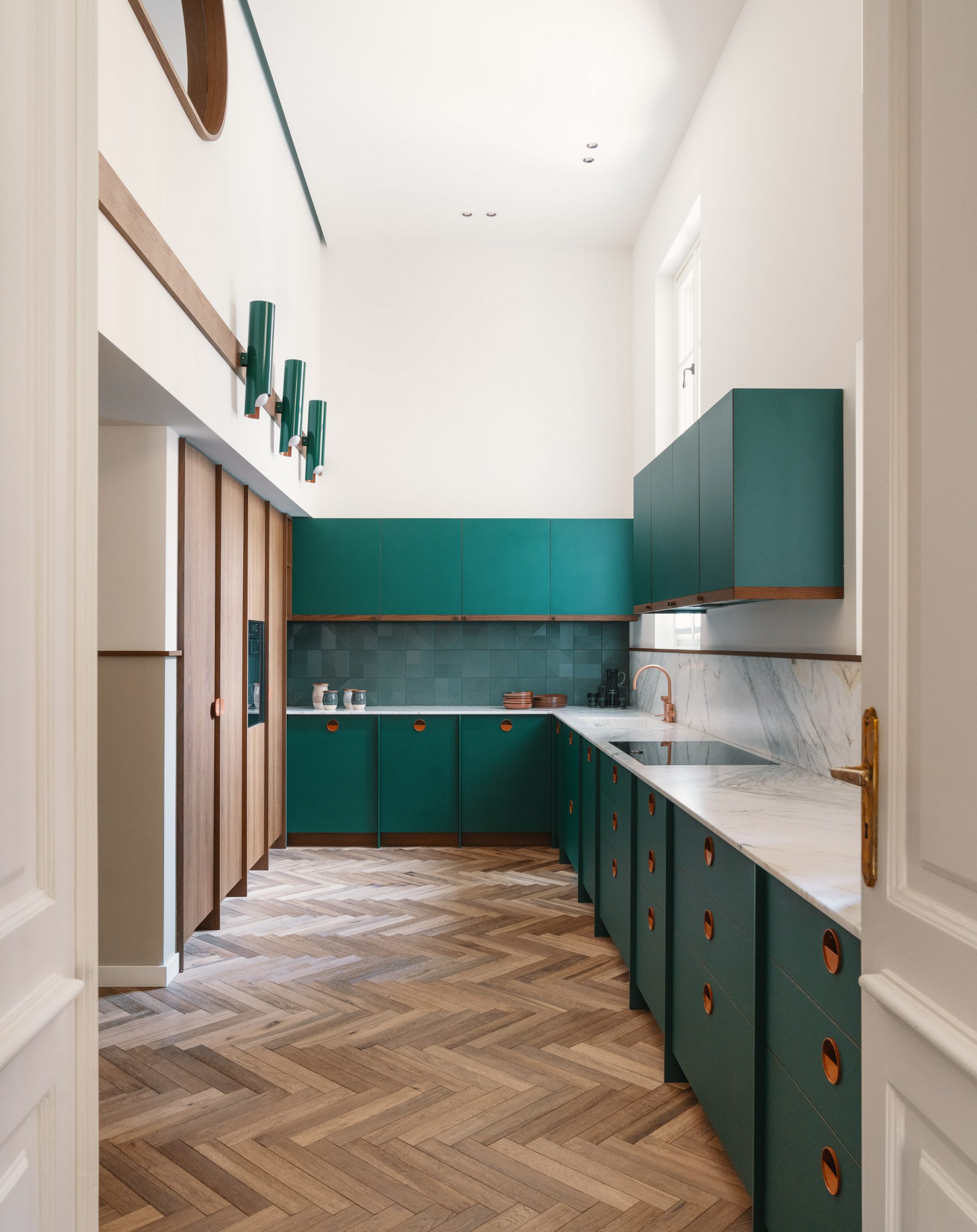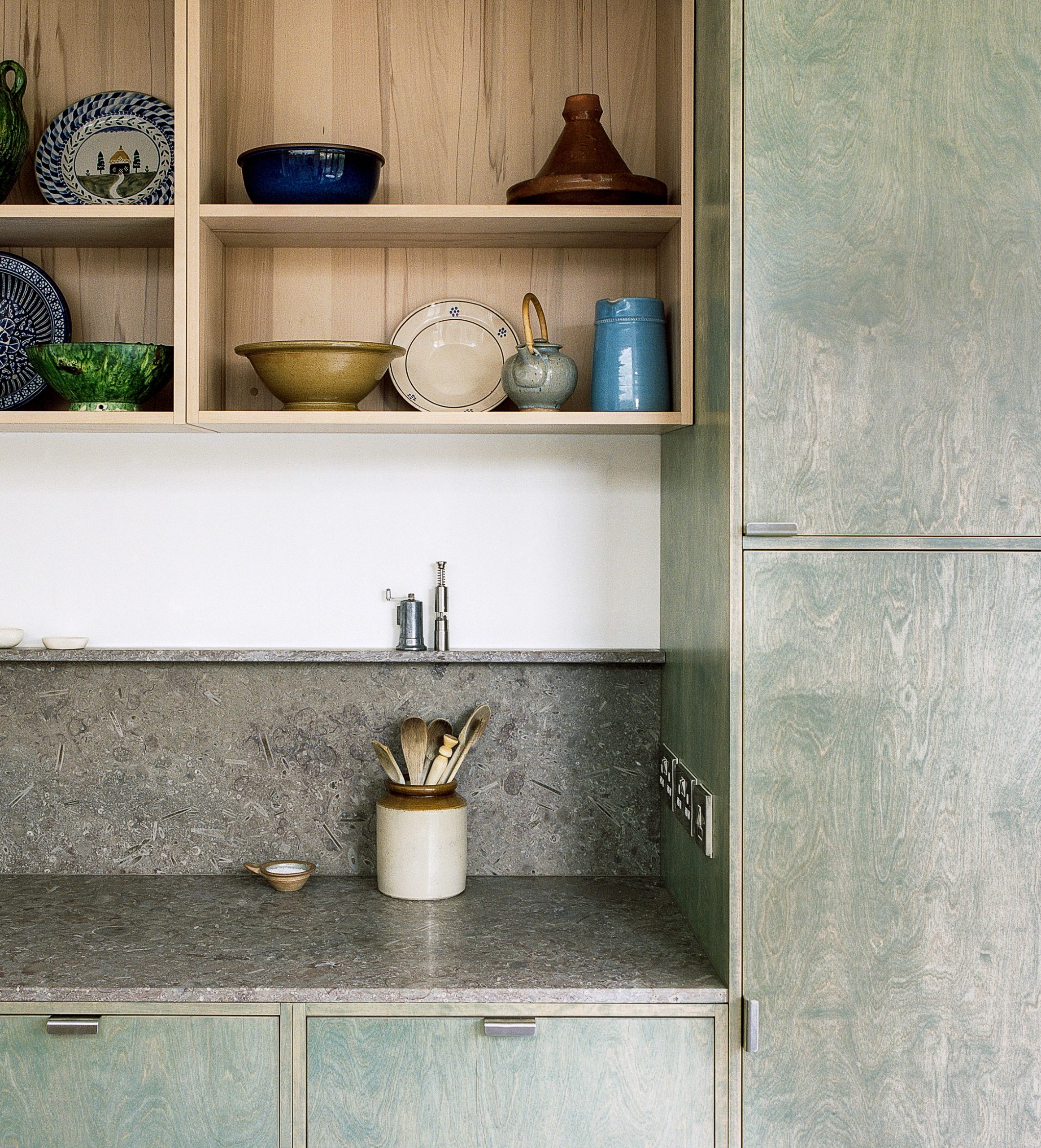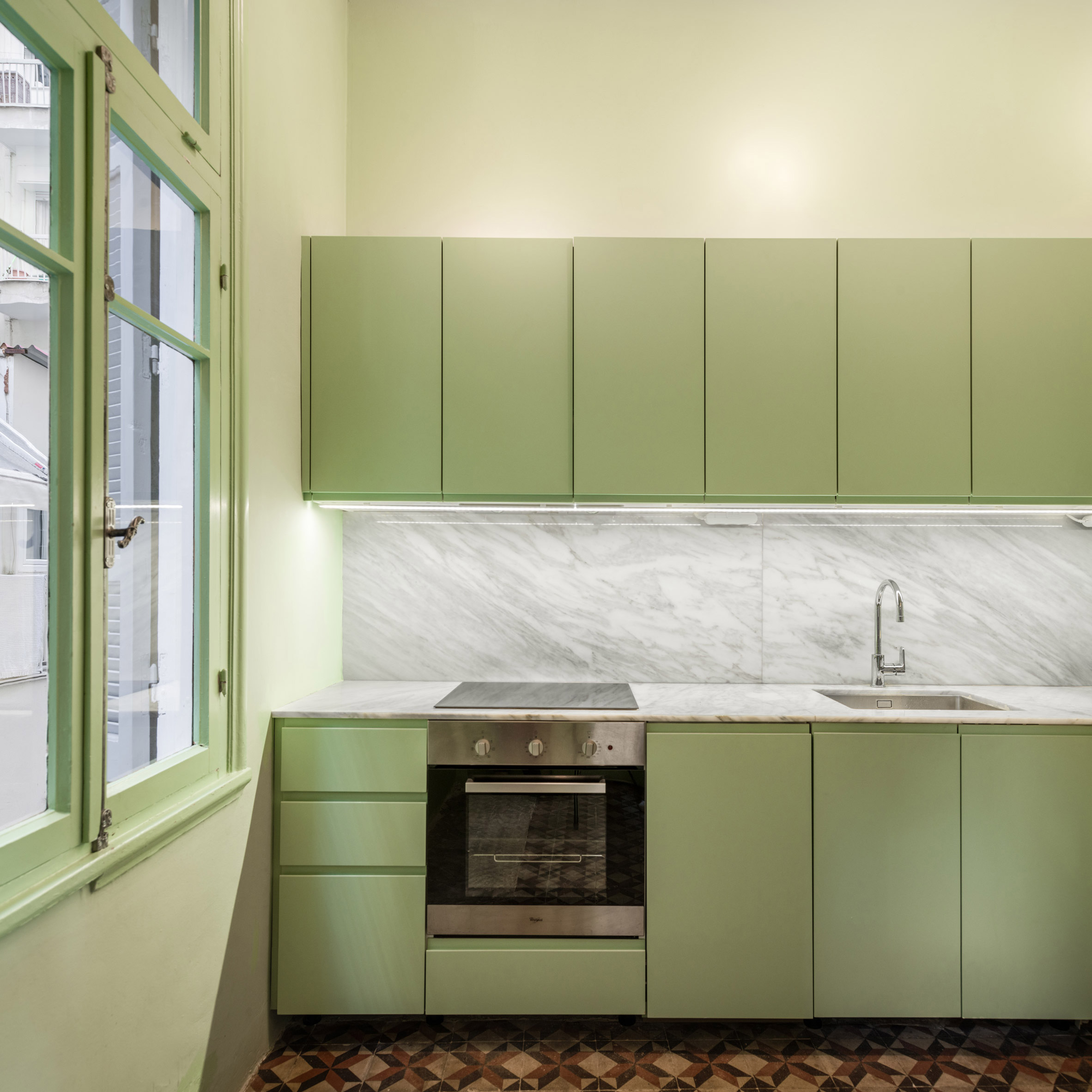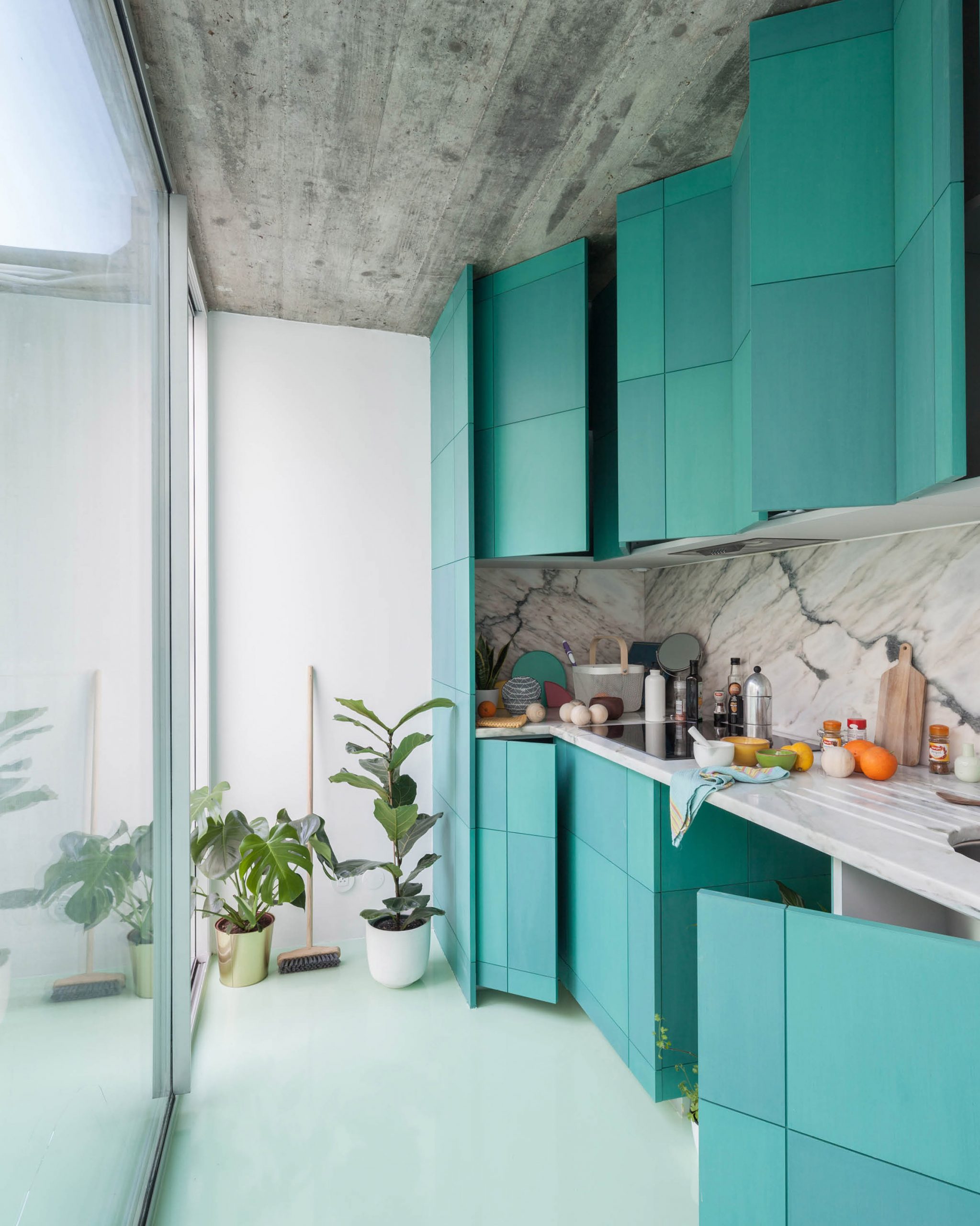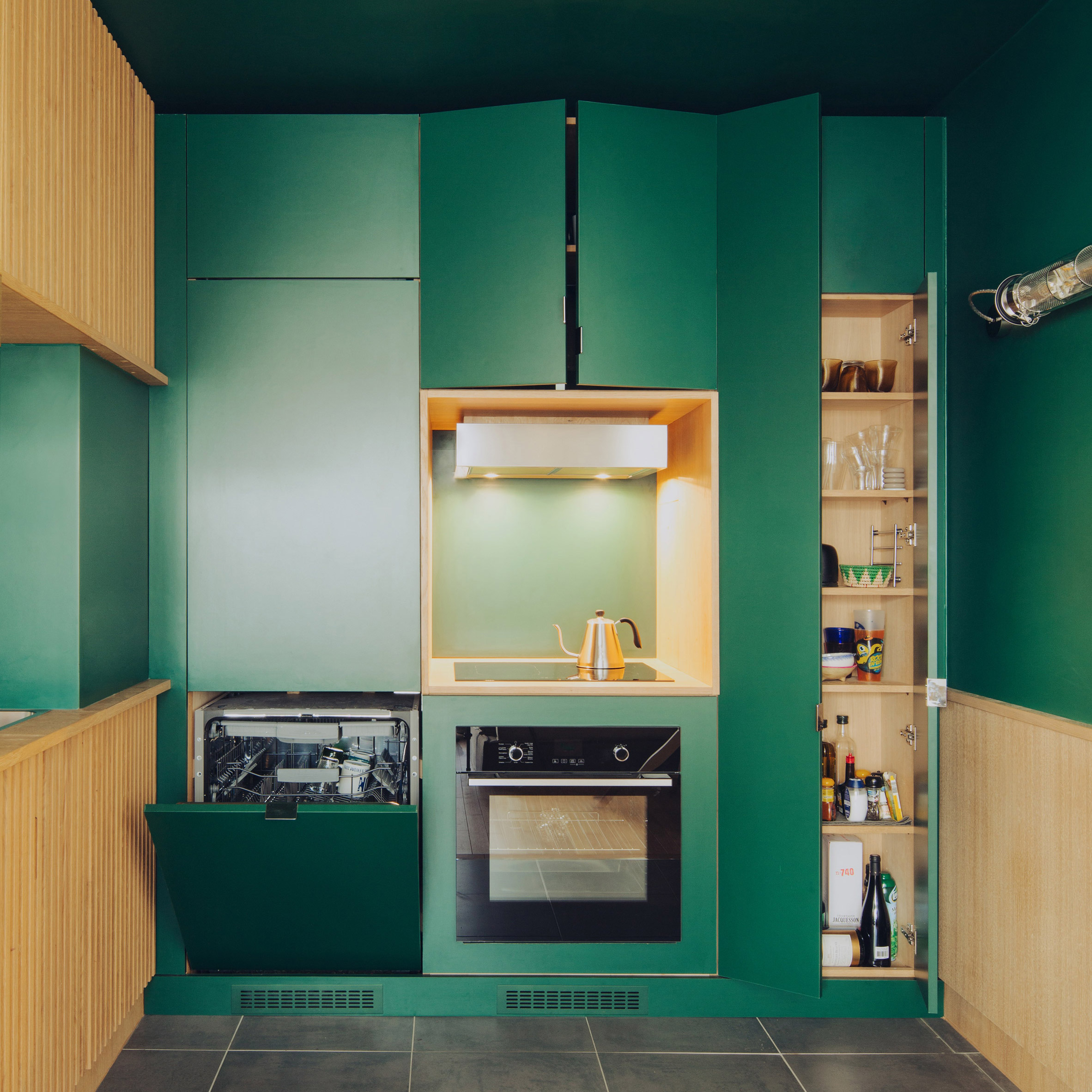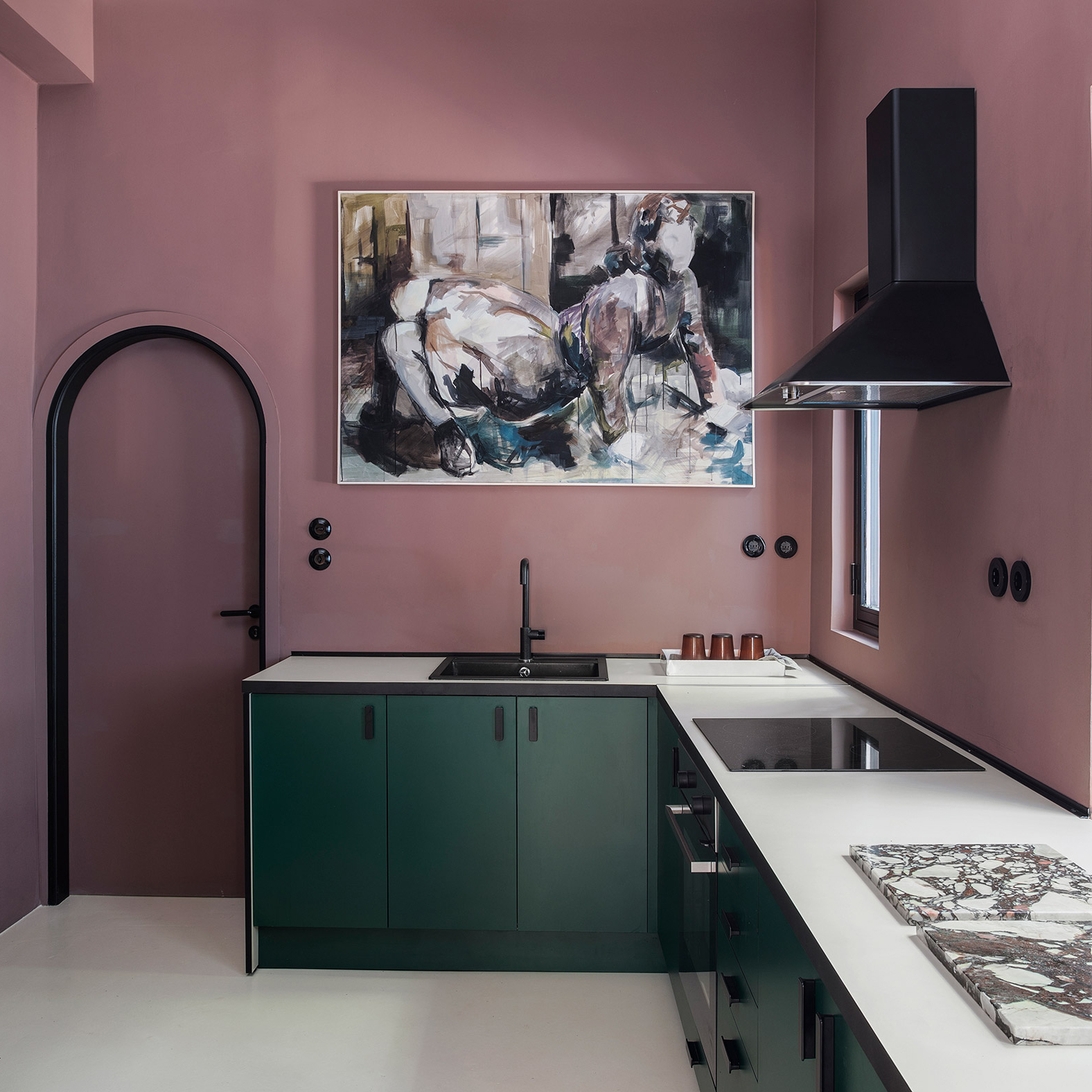Can't see your LCD screen in the sunlight? Use a sunshade
Digital cameras, PDAs, color screen mobile phones, laptops, and many other modern portable multimedia devices make use of an LCD or TFT monitor. LCD stands for Liquid Crystal Display, while TFT means Thin-Film Transistor ñ usually simply just referred to, incorrectly, as LCD, as they appear to be identical to the end-user, and they work on the same basic principle. They lend themselves to these applications well as they have very low power consumption and a lightweight design. These two factors are essential for portable devices like cameras and PDAs because they are designed to be carried around without being a noticeable encumbrance, meaning both the design of the hardware and the batteries that power it must keep weight to a minimum. While many of the prevailing issues with LCD screens have been addressed over the years, resulting in vastly improved displays for portable devices, due to the fundamental design of this type of display, one thing that still causes problems is the presence of excess light.

s stated above, LCD and TFT both generate a display with the same basic principle. In color displays, the whole of the screen is backlit with white light all of the time. To change the color of one of the dots that make up the screen in a pixel in it shifts through varying degrees of opaqueness. The pixel itself can be made to block all light but, say, green, resulting in a transparent green filter. The white light shines through this, however, only the green component makes it through the pixel, and to the viewer's eyes. The pixel can also shift to red or blue, or if made as opaque as possible, it will appear almost black. One area that LCD screens have never quite been perfect in because of the back-lit design, and the need for the pixels to be able to shift from fully off, where they are transparent, and appear white, to full-on, where they are almost opaque and appear black, all in the space of less than 1 100th of a second, is that the opaque state can never be perfectly created. As a result, LCD monitors always appear slightly gray rather than black.

Compared to what your television, or better yet, a CRT computer monitor can deliver, LCD screens have what is known as a bad ìcontrast ratioî. This is further compounded when light from outside the screen, such as from the sun, or overhead fluorescent lights shines back onto the screen's surface. The result is an even worse contrast ratio, causing all of the colors to appear washed out, and indistinct. It is for this reason that your LCD screens are harder to see under bright lights. Most people who find themselves in this situation quickly learn the simple remedy of angling the display down, or using their hand to cast a shadow across the screen. This is always inconvenient, and in the case of digital photography, where a good angle and a steady hand are required, it is often simply not an option. This is where a simple but valuable range of products to combat the problem comes into play.
An LCD sunshade is quite simply a hood made to fit over an LCD display, and block all peripheral light from striking the screen. They come in various shapes and sizes, from devices like laptops and notebook computers to smaller versions for cameras and PDAs. Some of the more expensive ones feature a collapsible telescoping hood that completely covers the display on all sides, even from the front face, where you would look in. Instead, they have an eyepiece mounted on this face that magnifies the image being projected from the LCD display, which the photographer puts his eye to. Simpler designs are less restrictive about the devices they will nicely mount onto. They aren't perfect, as light can still come in from behind the viewer, however, if this light is intense enough to matter, in many situations the photographer's head itself will simply cast the necessary shadow on the screen.

A couple of interesting examples warrant a closer look. There is a wide range of other products along similar lines, however, these two serve well by way of example. The first is the Hoodman H200. This LCD shade is specially designed to be compatible specifically with Nikkon and Canon cameras, however, it should be good for most 1.5 to 2.5î LCD displays. It is a simple Nylon box, tapering as it comes out, which secures the camera with a pair of Velcro and elastic straps. It folds flat easily when not in use, and can be easily accommodated in a camera bag. Retailing for less than $20, if you do any photography in brightly lit areas or outside, it's an accessory that quickly pays for itself with convenience.
The second item, the Hoodman E-Clipse E2000 is a sunshade made for notebook computers and laptops. Forming a black Nylon hood on four sides without significantly obstructing the user's viewing area, nor obscuring the keyboard drastically, could be a useful product if you use your laptop outside at all. Like the camera Hoodman, it quickly folds up flat and is easily stowed in your laptop case without adding significant bulk or weight. To use it, simply slip it over the upright monitor, and you're good to go. At $40, it's a little on the expensive side, however, for what it delivers, it may well be worth it.

Due to the very nature of how LCD and TFT displays work, bright light remains one of the most inconvenient hindrances to their use. Whether for your camera, multimedia phone, notebook display, or anything else that uses a color LCD monitor, a sunshade solves this weakness in a practical, affordable way with little hassle.
[the_ad id="89502"]
Abstract Photography - Has photography come of age
The invention of the camera liberated painting from its reportage role. Gone was the need to produce a likeness, detail the events of the story, painting was free to express emotions. True what had gone before contained an emotional content but now painting could experiment and through imaginative interpretation allow the emotional content to predominate. Freed from this constraint the painter was able to create a new language and explore the motivations of their art.
As the 19th century evolved and throughout the 20th-century painters from the impressionists through the cubists and expressionists to the minimalists could use color, line, and form to go straight to the emotional content of their work. The representational aspect of the work become coincidental and was pushed to the point that it became akin to lying on the grass making shapes out of clouds. Enjoyable as it may be it is secondary to the nature of clouds.

The introduction of the digital darkroom has given this freedom to photographers. The range of tools to fix and enhance the camera is capture when pushed to its extremes produces a range of fascinating effects. When added to the filters built into the better software, images can be produced that any comparison to the original photograph is purely coincidental. As photographers explore these tools and incorporate them into their photographs so their visual language will grow. The revolution of the medium with the development from black and white into color is taking its next step. Now with the digital darkroom's ever-growing range of tools, the only limitation is the photographer's imagination.

With the use of these tools, the skilled photographic artist can take the pop song and create, in visual terms, the lyric beauty of a baroque symphony or the downtown jive of a jazz variation without a tree or a high rise in sight. Just the light captured by the camera and fine-tuned into something completely different, something new that comes from the photographer.

The photographer has been liberated like the painter before them by technology. Now photographs can explore the full range of human experiences including those they have no words to express. Large statements will be accessible by the photographer not only in physical terms. Although like their painter counterparts, through an additional feature of the technology, the large canvas is becoming the order of the day. That this canvas can express feelings rather than just illustrate them denotes that photography has become an adult in the arts.
5 Tips To Help You Master Digital Photography
Have you already mastered the art of taking photos without red-eye syndrome? Are there some pictures that you know you should have turned out a lot better than they did? It happens to all of us even the expert photographers.
Here are five tips to help you move from beginner to master of digital photography, whether you're using your cell phone or a point-and-shoot camera to snapshots.
Compose Carefully
One of the most basic digital photography tips is to pay attention to whatís in the frame of the viewfinder. Fill the frame. Nothing but blue sky, for instance, behind a single subject throws off the proportions of the photo and decreases interest. You can also turn the camera sideways to see if a vertical photo might have more impact than a horizontal shot of the same subject.
You can also try positioning your subject off to the side, rather than in the center of the photograph.
Take Great Close up Photos
Your digital camera has a macro mode think of it as a super magnifying glass. An extreme close-up of something like flower petals can bring out textures that you never knew existed and will add excitement to your photos. Play with this feature, you will find dozens of ways to use it to enhance your pictures.
Buy a Tripod
Digital cameras are prone to blurry photographs if your hands shake even a little bit. Several companies manufacture light, portable, inexpensive versions. Digital photography tips like this can save you hours of frustration and preserve otherwise perfect shots.
[the_ad id="85360"]
Get Active
Take your shot from the top of a teeter-totter, off the side of the boat, or standing on your head. Thinking outside the box can really pay off in unexpected ways. You will truly get once-in-a-lifetime shots by adding a bit of creativity to your thinking.
Take a Class
Are you still hungry for digital photography tips? There is nothing like practice to improve your photography and except practice plus experience gained by learning from a pro. You can find photography classes online, at your local recreation centers, and community colleges.

Becoming an expert at digital photography takes time; you won't become a professional photographer in your first week. Just keep trying new methods each time you use your camera, and before long, your friends and family will be admiring your newfound skills.
5 Tips For Shooting Winter Landscapes
Winter brings out the toughest elements in our climate, with many people putting away their camera bags till early spring. But, if you do put away your camera you are missing out on the raw beauty that this magical season brings.
Here are a few tips to make the trip more enjoyable.
1. Wear the right clothes
It is very important to wrap up warm when outshooting winter images. The winter season brings the toughest elements, so if you are planning to spend a few days out and about always be well prepared.
2. Watch the weather
It is very important to know what the weather is going to be like. You don't want to travel for a couple of hours and then hear a weather report that tells you that: the weather is wet for the next few days. During the winter months, the weather can dramatically change in a matter of hours. It is were always advisable to let someone know where you are going and which route you're planning to take. If you do get injured or ever caught in a storm someone may be able to help.
3. Carry only what you need
Carry only the essentials. You don't need to upload your camera bag with every piece of equipment you own. If you are going to be out taking pictures all day you are much better off going as light as possible. Carrying a light load will also help preserve energy. You could be climbing icy rocks or crossing snow-filled hills; a warm flask would serve you a lot better than a third camera.
4. Look for detail
Snow, ice, and frost bring out texture and atmosphere in most subjects. The early frosty morning is an ideal time for close-up photography. The frosty morning also brings out patterns in our landscapes. Take care where you place your camera: if you are taking pictures early in the morning try placing them at oblique angles to the sun - this will give your images strong shadows. This will also add mood to your landscape images. Once you have found the perfect spot pay extra attention to foreground interest as this will add depth to your image.
5. Expose carefully
Snow and ice are extremely difficult to expose properly. Snow usually confuses the metering of your camera system or your handheld light meter. When you take a light reading from snow you will automatically get an underexposed image. The meter will record the snow as grey. Now is the time to start bracketing your shots. If you bracket your shots add 1 - 2 stops of light to compensate for your light meter reading. Using an 18% grey card, which I described in a previous article, should also give you a perfect light reading.
4 Great Camera Tips for Enhanced Photos
Just bought a new camera ?? And very excited to start taking photos with your new gadget??
But Alas, why does the picture not look as good as you wanted to !! Fret no more, stay tuned below for 4 new tricks to taking more interesting and memorable photos.
Trick #1 - Try out different camera exposure settings
By exploring the exposure settings of your camera, you could have pictures looking more brilliant with 0.5 to 2 stops underexposed in bright surroundings, and scenes appearing more clear with some overexposure. Just by simply turning the exposure level, you can create pictures that can bring out different moods from people viewing it. That's why the quote "A Picture Says A Thousand Words" is very true indeed! For newbies, try out bracketing (i.e: Take the same photos with different exposure levels) and take your favorite pick from them.
Trick #2 - Bring out some creative blur in photos
By introducing some well-planned blur in photos, you can bring across certain important features, while using the rest as a good complement, providing an overall nice touch. This can be done in 2 basic types. The first type is a depth-of-field blur. Varying the lens aperture between 0.4 to 1.4 can create a lovely, soft background blur that brings sharp focus to the subject in the foreground.
The second type is movement blur. Done by setting the camera exposure on shutter priority, and keep it slow so as to capture interesting streaks as the subject moves in front of the camera.
Trick #3 - Create something out of nothing
What does it mean? This exercise encourages you to take a step back and rethink how you can take wonderful pictures with things you already encountered on a daily basis.
One approach is to create your shot around the common elements around you such as lines, space, and patterns. This can mean anything from the roads to the bridges, the trees, the railings, etc. You start to see more possibilities and room for creativity.
Trick #4 - Take Unique Photos
Try to avoid taking photos from already popular places where everyone else has taken them before, it will not be fresh, and the excitement is also much diminished. Try out new extreme photography (for example underwater photography), or it could be as easy as shooting through thick glasses for that extra 3D feel or shooting reflections of objects in water or other reflective objects.
5 Top Architectural Photography Studios in the World in 2021
Enter the 9th Annual A+Awards in the Architecture +Photography & Video category to have your work published internationally and receive global recognition for your work. Click here to start your submission.
Photographers see potential in architecture that oftentimes we overlook. They find dramatic angles or stunning light to take a still image of a static structure and give it dynamism, power, and life. At their best, the world’s best architectural photographers can capture not only the form of a building but its atmosphere, its very essence. They aim to capture images that illuminate an architect’s vision, but also sell an experience, allowing viewers to imagine themselves interacting with space.
Each of the following photography studios is among the world leaders in their field, capturing projects by leading architecture firms from BIG and Zaha Hadid to Kengo Kuma and Jeanne Gang. Every one of these companies received a prestigious accolade as a Winner or Finalist within the Architectural Photography category in the inaugural A+Firm Awards, the first AEC program designed explicitly to reward studios of all sizes, geographies, and specializations.
Read on to learn about some of the world’s top architectural photography studios, each of which is inspiring architects, clients, and the wider public to view the built environment through a new lens:
Julien Lanoo 2021 A+Firm Awards Winner, Best Architectural Photography Studio
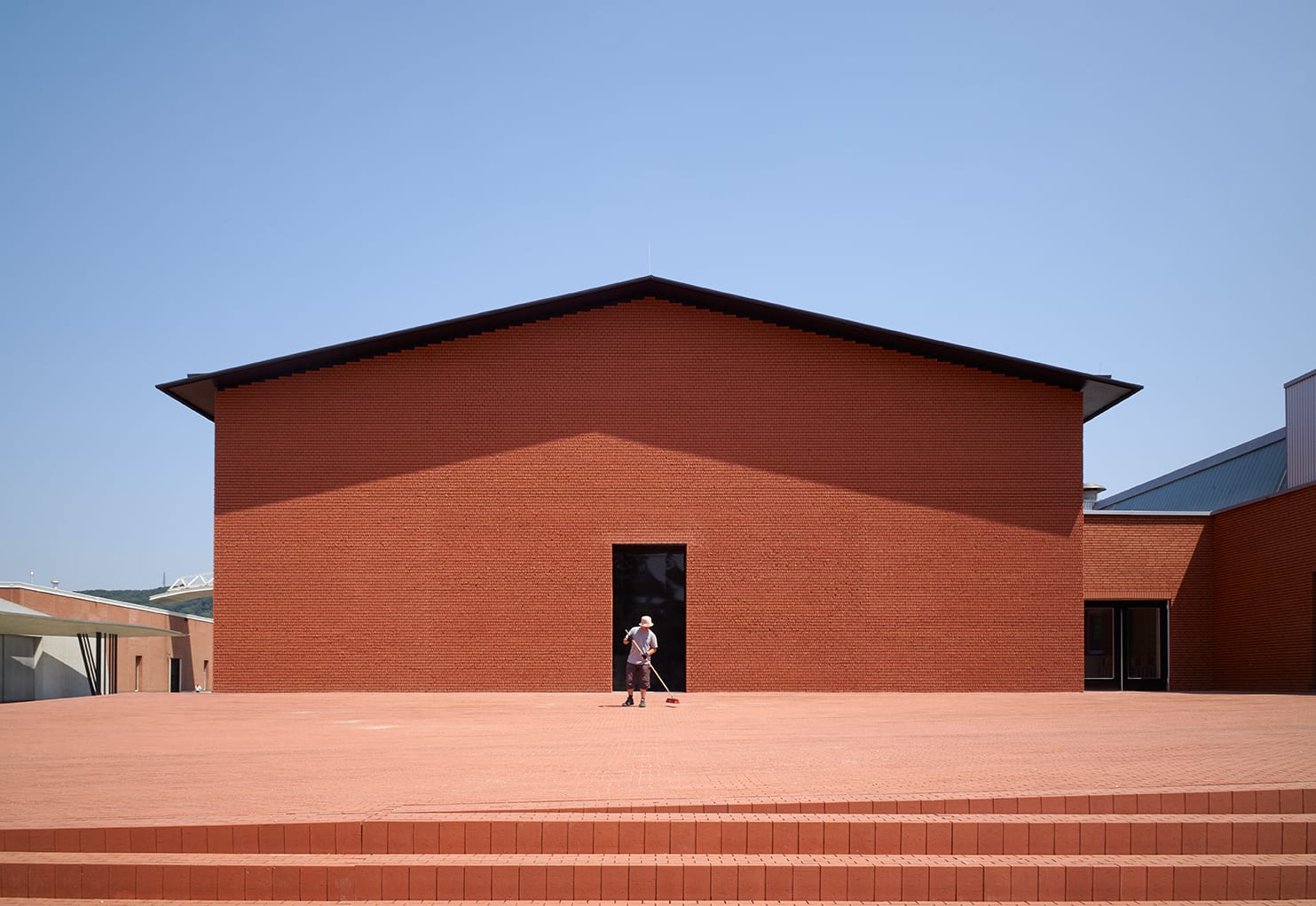
Firm Location: Comines, Belgium
Firm Website: http://www.julienlanoo.com
Pictured Project: Vitra Schaudepot by Herzog & de Meuron, Weil am Rhein, Germany
Julien Lanoo’s photography is a documentation of the built environment. He looks at the architectural world with a deep understanding of its historical and social layers as well as the visible and intangible connections between nature, light, and materiality. Lanoo’s photographic career has covered such topics and fields as architecture, design, social integration, urban transformations, and their dwellers. His work has been exhibited widely, including the Venice Architecture Biennale, the Chicago Architecture Biennial, the Cité de l’architecture in Paris, and the Deutsches Architekturmuseum, among others.
He co-authored, together with Julien de Smedt, the book “Built Unbuilt” revisiting 16 years of JDSA’s work, and most recently his photographs appeared in “The Vitra Campus: Architecture Design Industry”. His never-ending search for the intricate relationship between the human being and his surroundings, a central subject in his photographs, was presented in 2018 as In[Cognitus], a monographic exhibition at the WAAO in Lille, France.
Ema Peter Photography
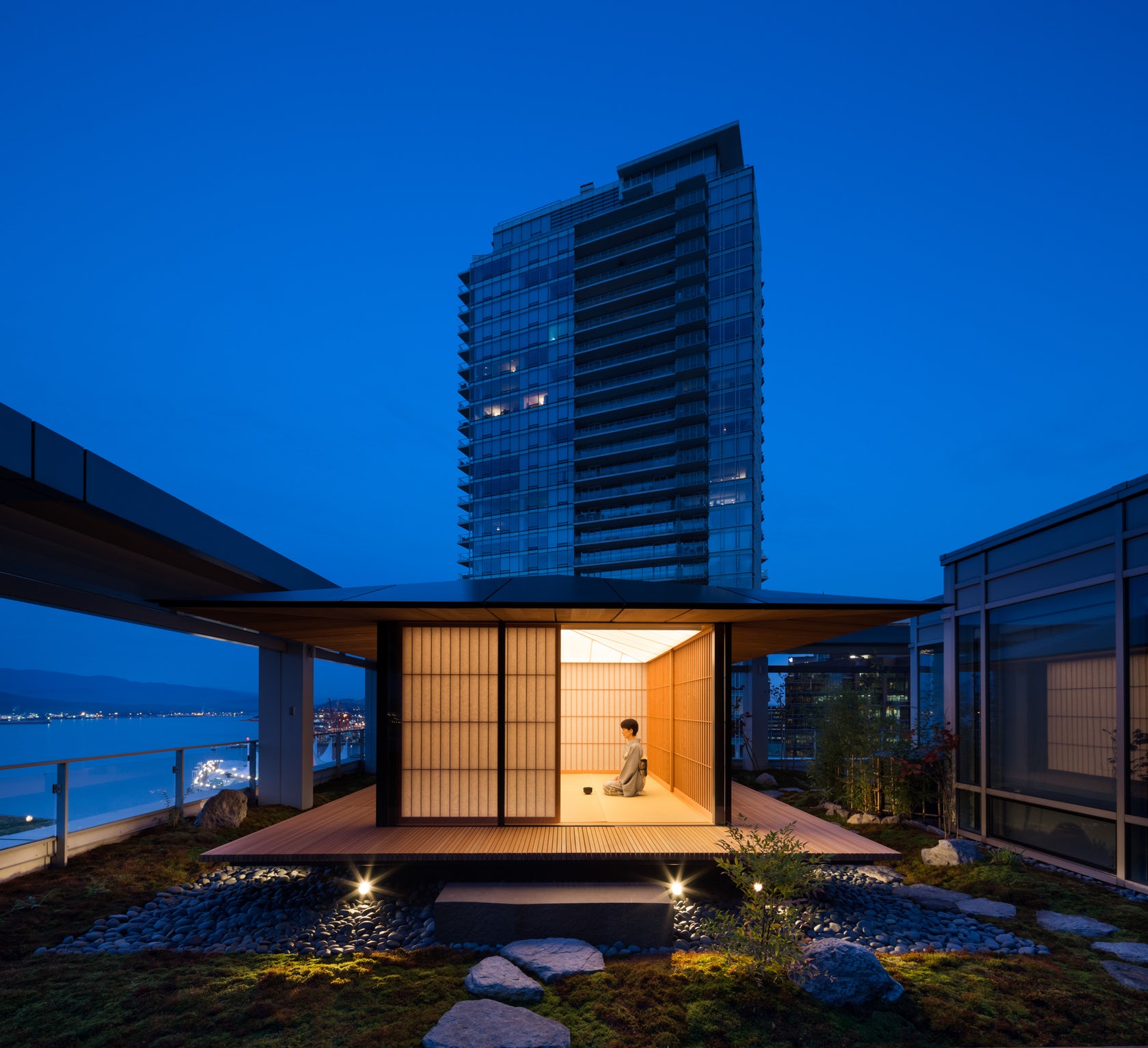
Firm Location: Vancouver, British Columbia, Canada
Firm Website: https://www.emapeter.com
Pictured Project: Teahouse in Coal Harbour, Vancouver, British Columbia, Canada
What distinguishes Ema Peter is her search for the ‘one image’ and the desire to capture that decisive moment, the kind that Cartier-Bresson chased. It is to create an image that will stand out in a sea of images. Ema Peter is here to tell a story, to make the viewer want to explore, to stop people in their busy day with one photograph and make them lose themselves in that image.
The firm’s mission is not only to record architecture and design but take beautiful images. Peter photographs architecture to showcase the soul, the spirit, and the uniqueness of each building and space. The photographer’s goal is to make sure she does the project justice and finds those hidden moments that even the architect has not seen.
Peter has always called herself an architectural photojournalist because, for her, adding the human element in images is so important. She believes in humanizing architecture and making sure to showcase the life of a building. Peter truly believes in innovation and is continually seeking out projects that are sustainable, that create true impact in protecting our environment and that will make history. Peter actively searches for those projects in the architecture community with the mission to display them to the world and help to broaden the exposure of this approach to architecture.
Peter also tries to pave the way for female architectural photographers to hold the camera proudly, to make sure that women are given equal opportunities and are not distinguished by gender. Peter’s aim is to make her mark on the world scene of architecture.
Matthew Millman Photography

Firm Location: Berkeley, California, United States
Firm Website: www.matthewmillman.com
Pictured Project: Moscone Center, San Francisco, California, United States
Through vigorous exploration, careful observation, and a dedication to craft, Matthew Millman strives to tell resonant and insightful visual stories about architecture, design, and art. Millman’s photographs aim to reveal the deepest aspirations of the architect and artist as well as capture the greatest impact of a project on its inhabitants and observers.
Chongqing QIWEN Advertising Co., LTD
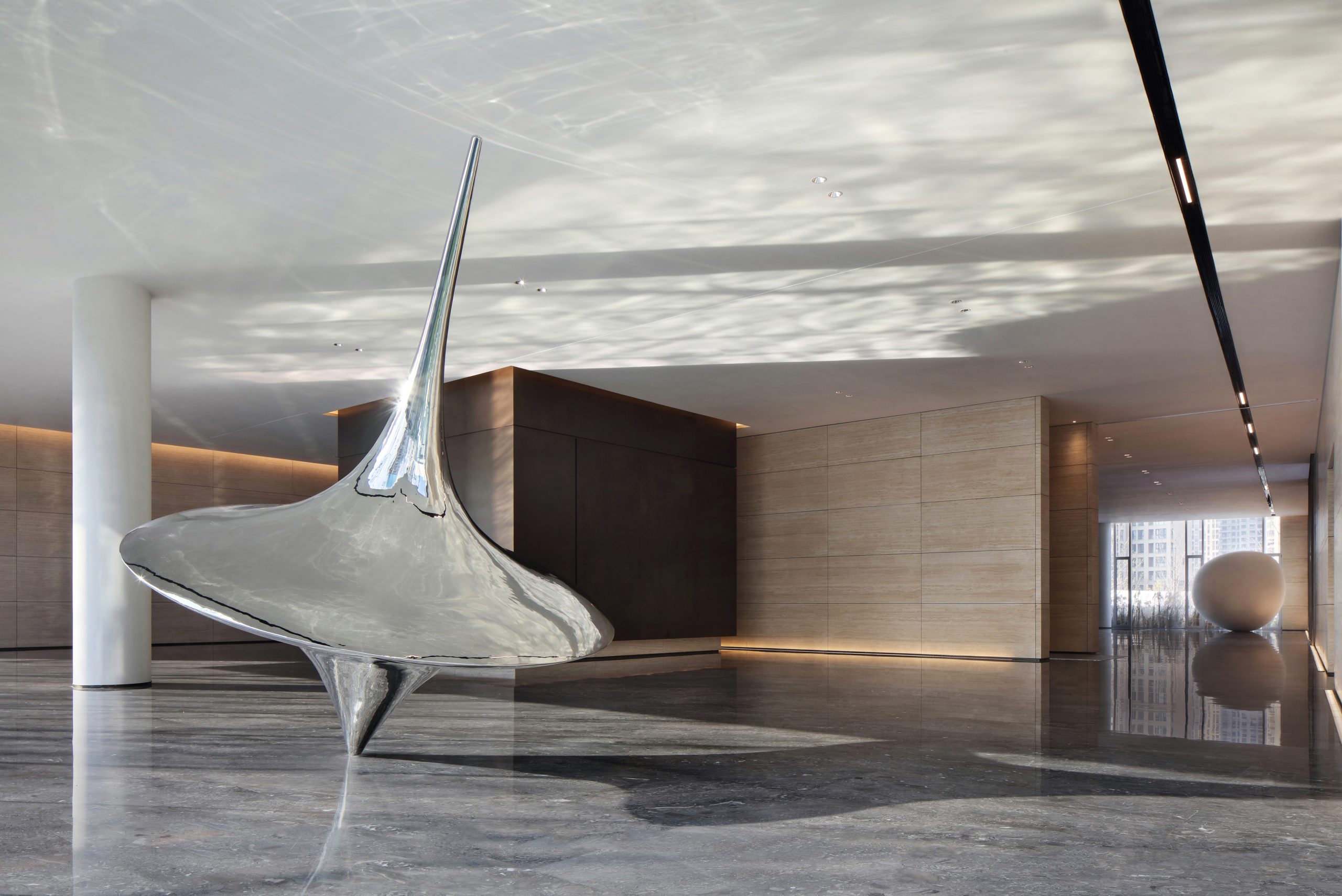
Firm Location: Chongqing, China
Pictured Project: Sunac · Grand Milestone Sales Center, Xi’an, China
Chongqing Qiwen Advertising Co., Ltd. was founded by photographer Mr. Zhang Qilin, who is also the director of photography for the company. For over thirteen years, the firm has been providing professional services of architectural space photography, and adheres to the concept of focusing on art, quality, and details, so as to best present the best works of designers. Chongqing QIWEN is committed to improving the visual effect of design works, and leave the permanent “portrait” for architectures and spaces.
UK Studio

Firm Location: Beijing, China
Firm Website: https://www.uk-studio.net/
Pictured Project: Aranya Seashore Chapel, Qinhuangdao, China
UK Studio focuses on the city walking observation, architectural photograph, and spatial humanistic thinking, shoot not only a specific architecture or an interior space but also a kind of spatial relationship and thinking. That is the source of our motivation and where creativity comes from. UK Studio was co-founded by Irene Liu, an architect with a Master’s degree in Architecture, and Ricky Yan, an interior designer who graduated from China Academy of Art. UK Studio is an architectural photography studio with a design experience background, international vision, and artistic aesthetics, making continuous improvement over the years.
UK Studio aims not only to shoot architecture and space, presenting the most beautiful scenes but also to cultivate a kind of thinking. During the shooting, the firm appreciates the designer’s intentions, perceives people’s behavior in space, and thinks about the relationship between architecture and the environment. This kind of thinking shooting makes the firm’s photographs more spiritual and full of vitality. The firm holds a belief that the charm of architecture comes from the scale of time, but also the dialogue with natural light and shadow. Every photo of UK Studio is a dialogue between the photographer and space, which is what architectural photography means for the firm.
Should your firm be considered among the world’s best architecture firms? Register for the A+Awards (now open for entries) and the next A+Firm Awards (opening this fall) and submit your work for global recognition:
The post 5 Top Architectural Photography Studios in the World in 2021 appeared first on Journal.
A Bedroom Design Idea For Creating A Nice Warm Glow Of Light
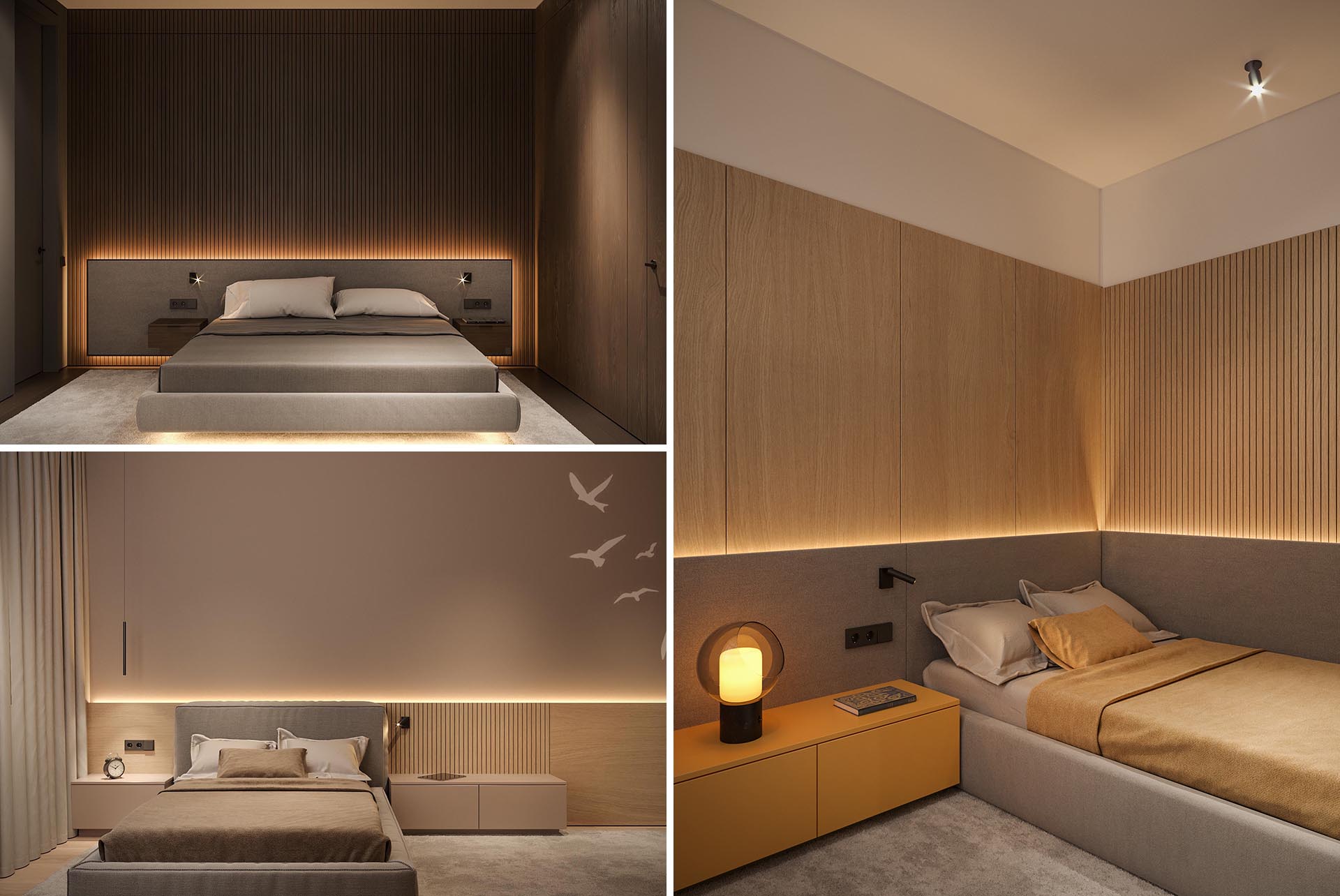
Bezmirno Architects has designed a modern apartment in Kyiv, Ukraine, and included in the design of the bedrooms are backlit headboards.
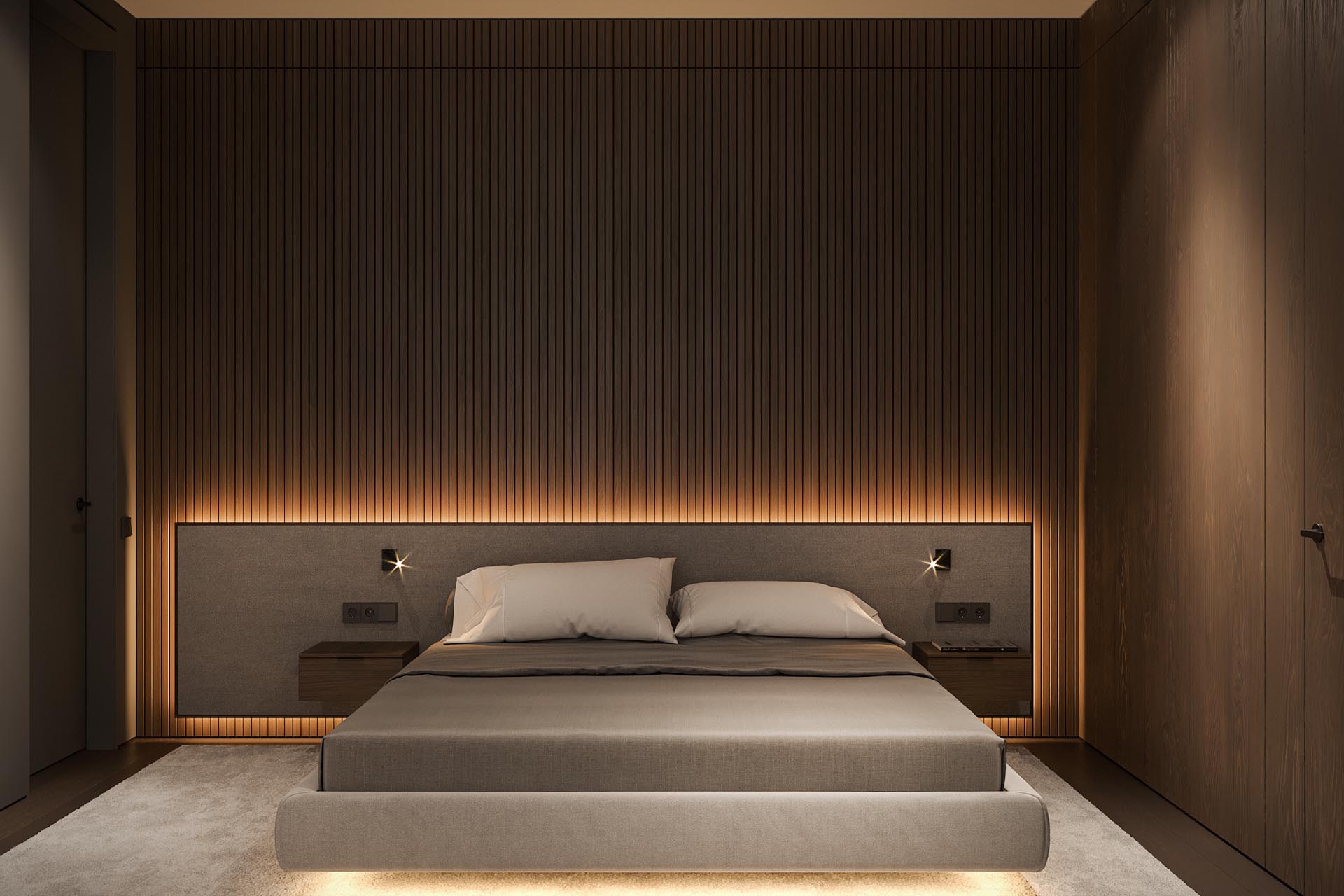
Each of the three bedrooms in the apartment interior has wood accents, either a full wall or partial wall, however, it’s the backlit headboards that create a nice design feature.
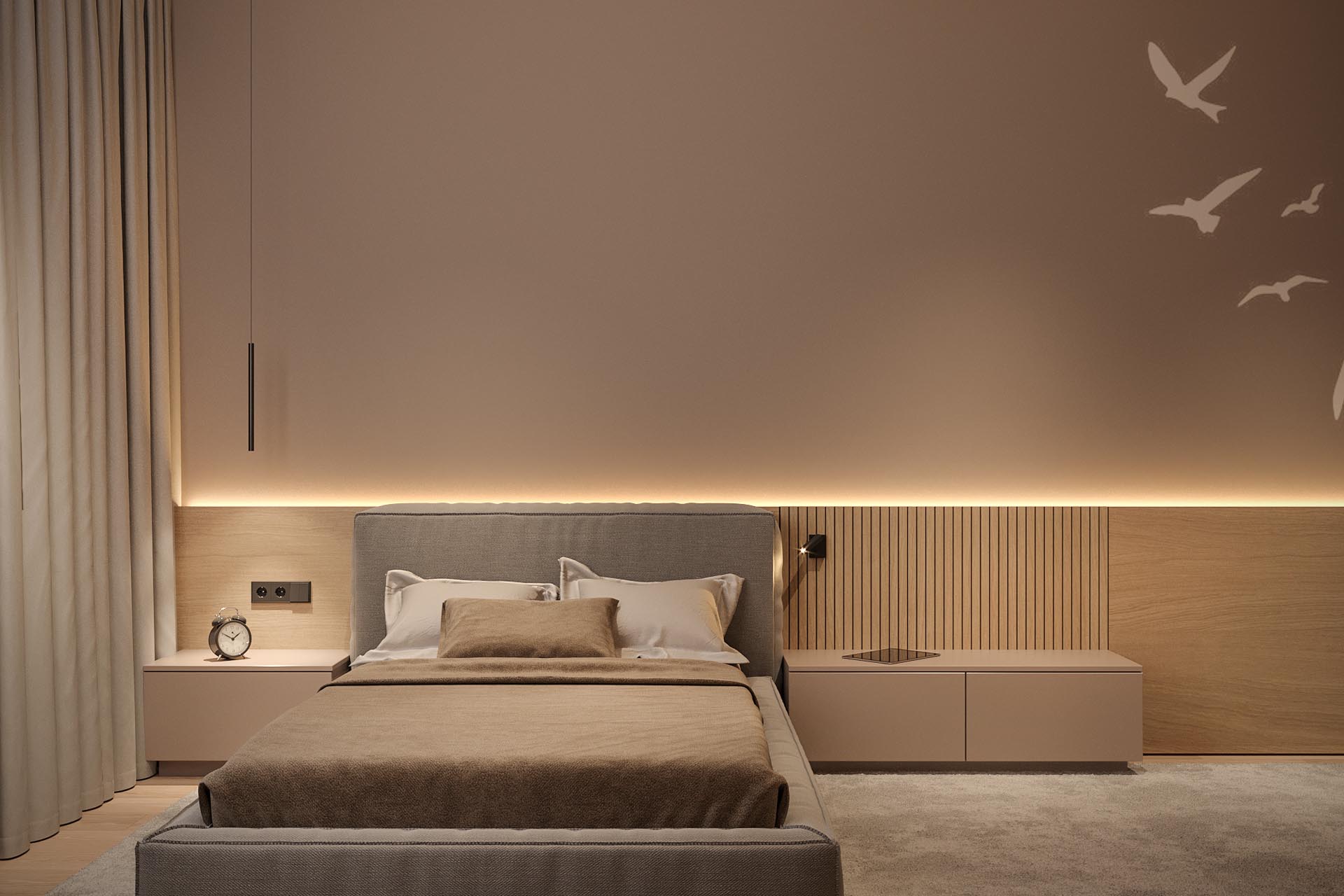
The hidden LED lighting follows a horizontal line around the walls of the bedrooms, creating a calming atmosphere, ideal for a bedroom.
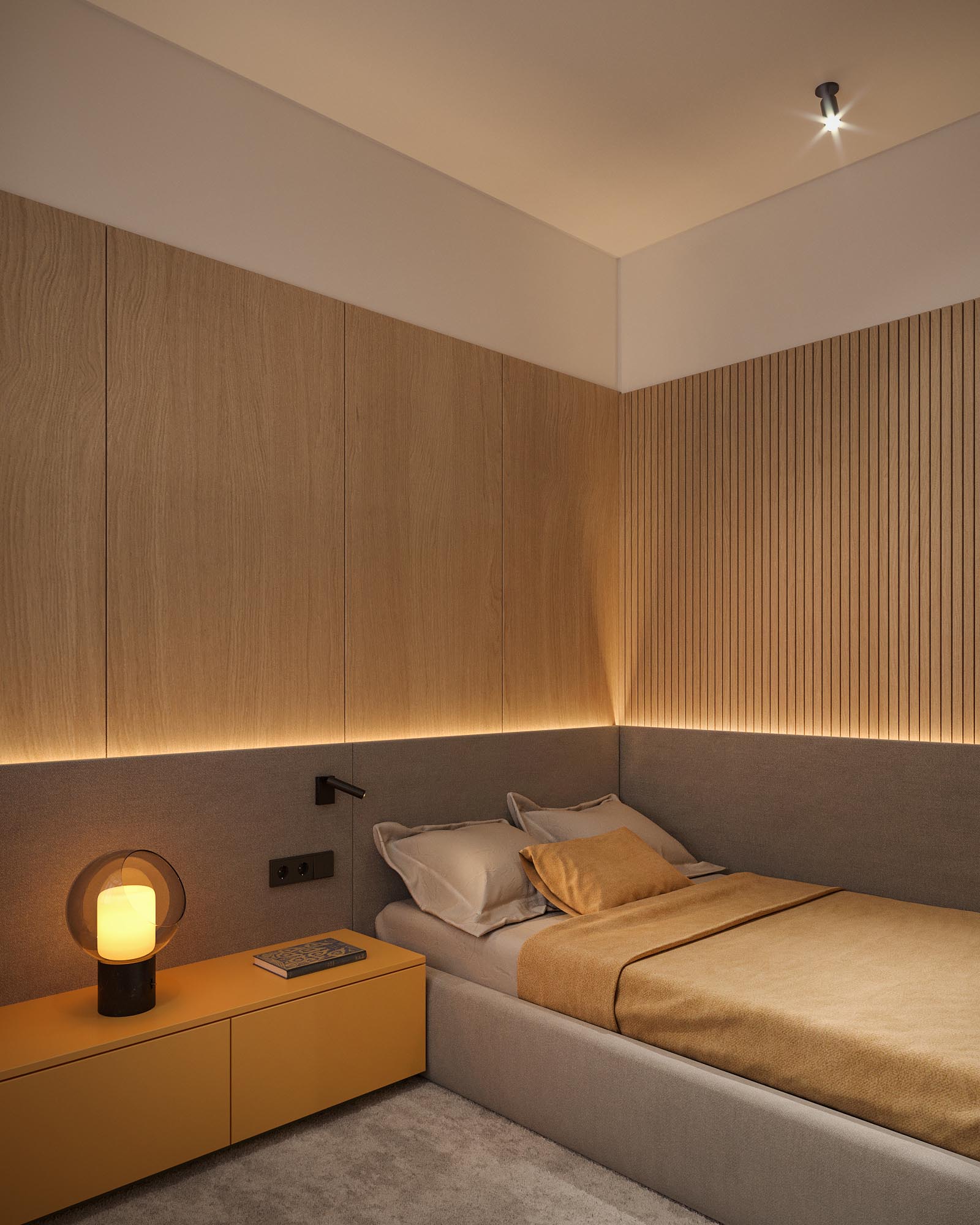
Let’s take a look around the rest of the apartment…
Dark wood hallways connect the entryway with the bedrooms and living spaces.
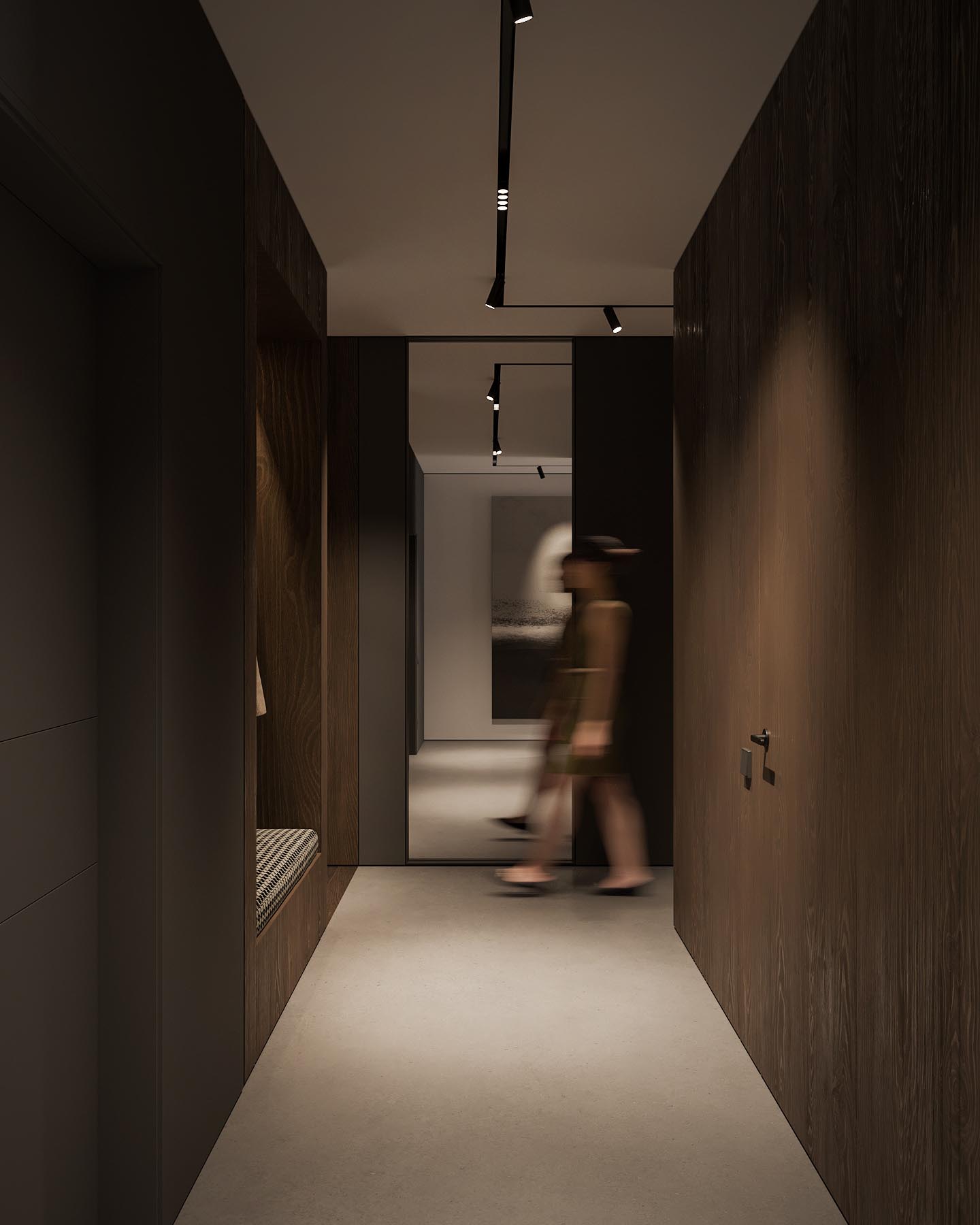
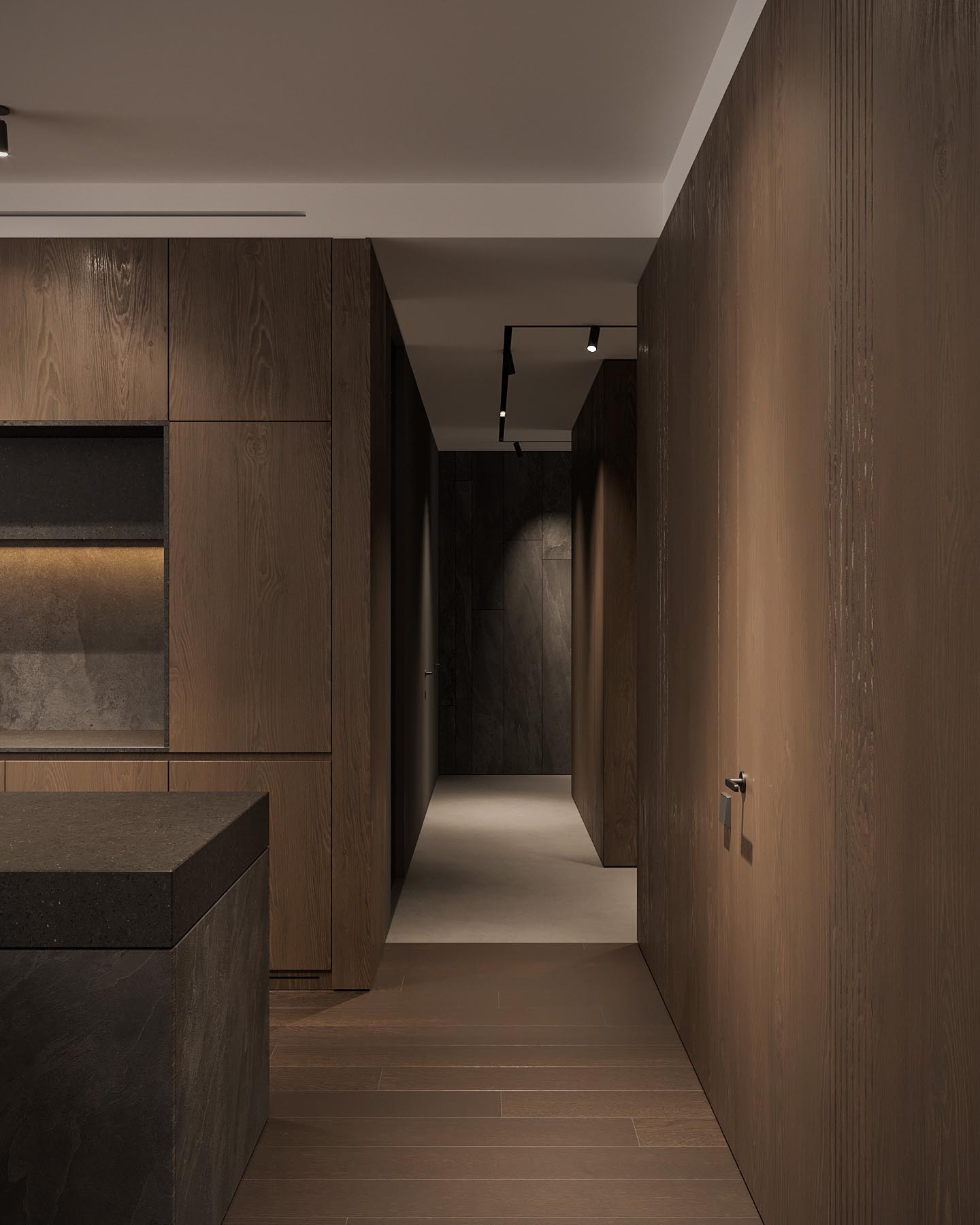
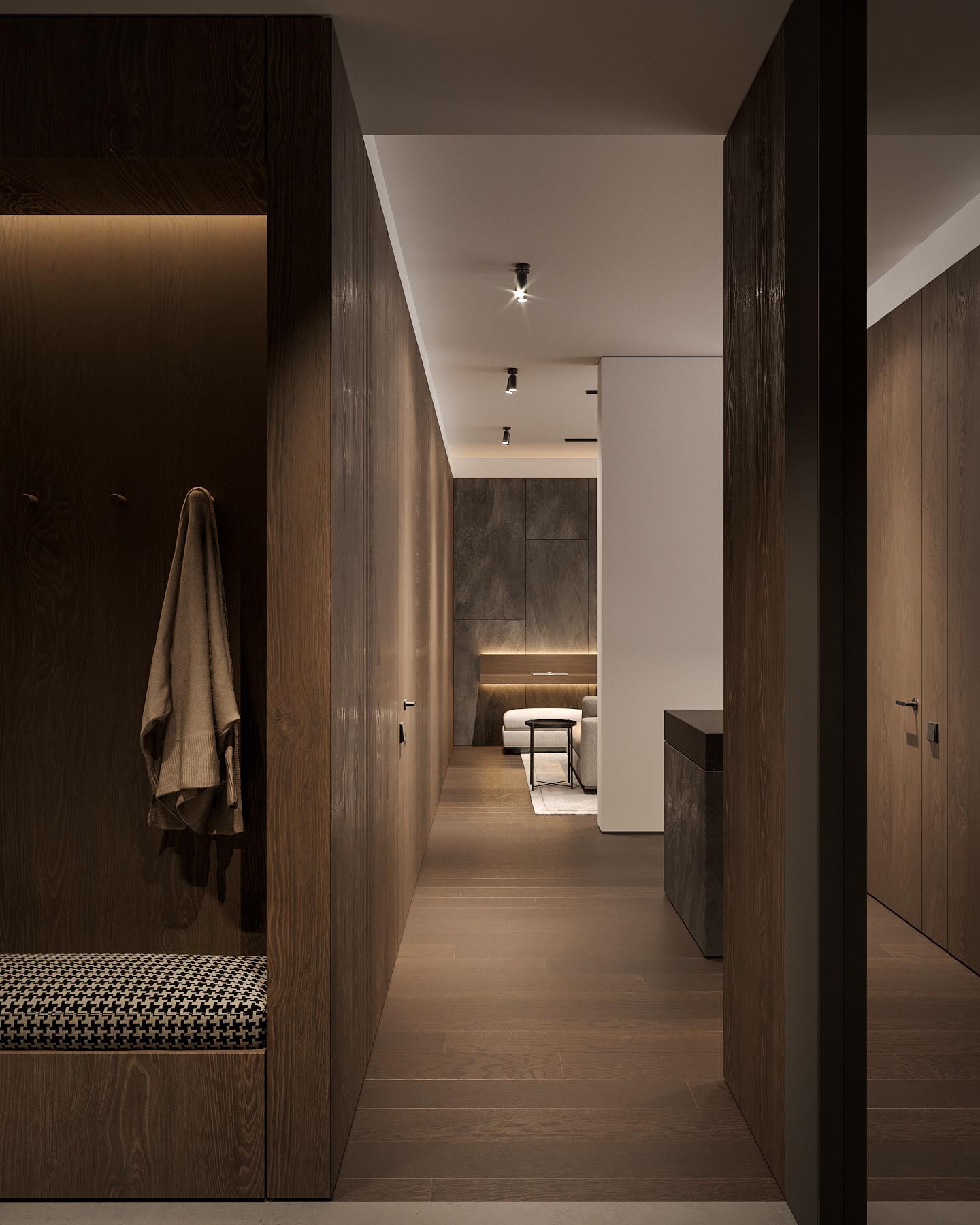
A spacious wood kitchen with black accents has a large island with an extension for seating 8 people.
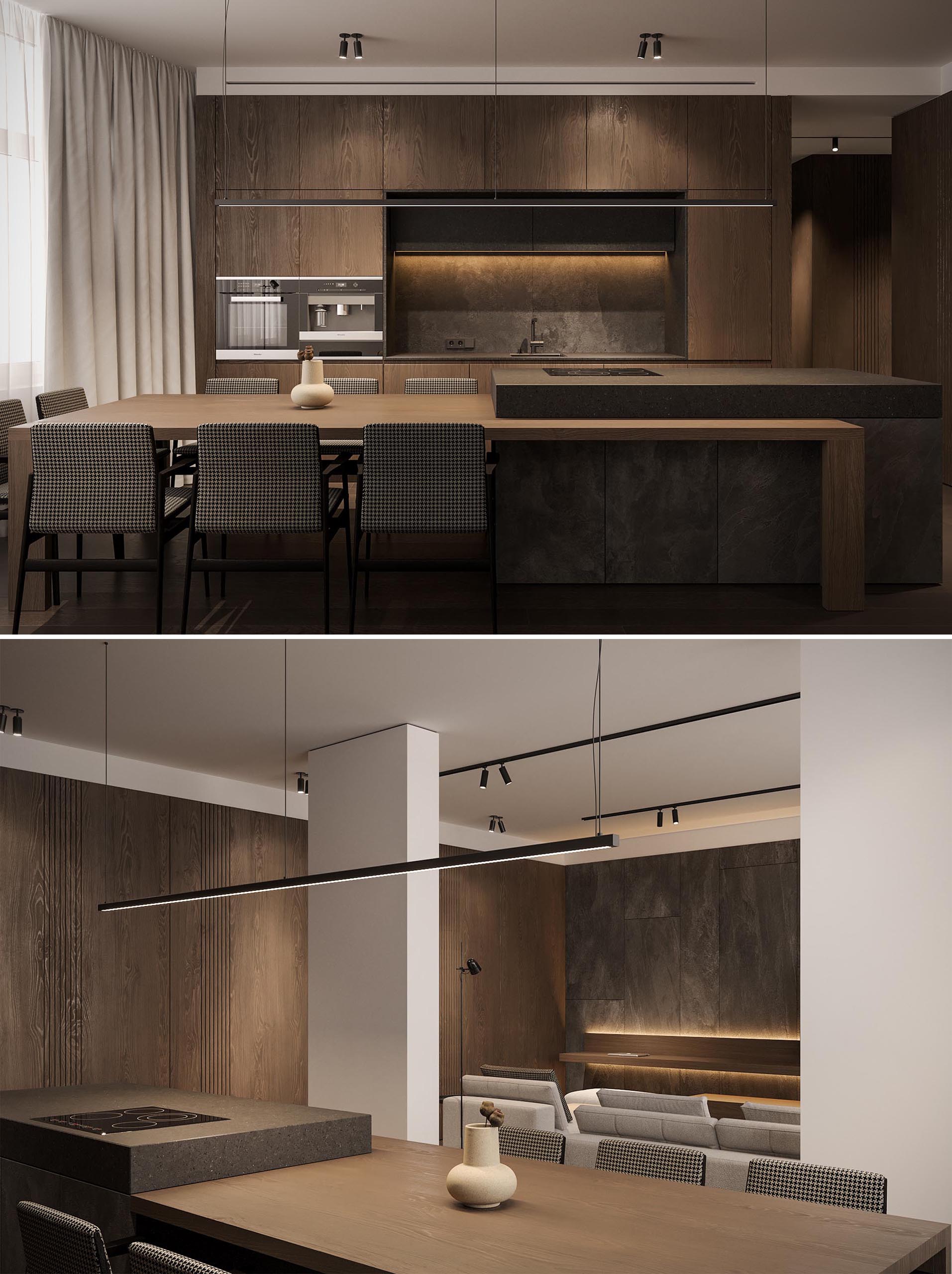
Beyond the kitchen is the living room, where modular furniture creates multiple seating areas, and the TV shelf is highlighted by lighting, similar to that in the bedrooms.
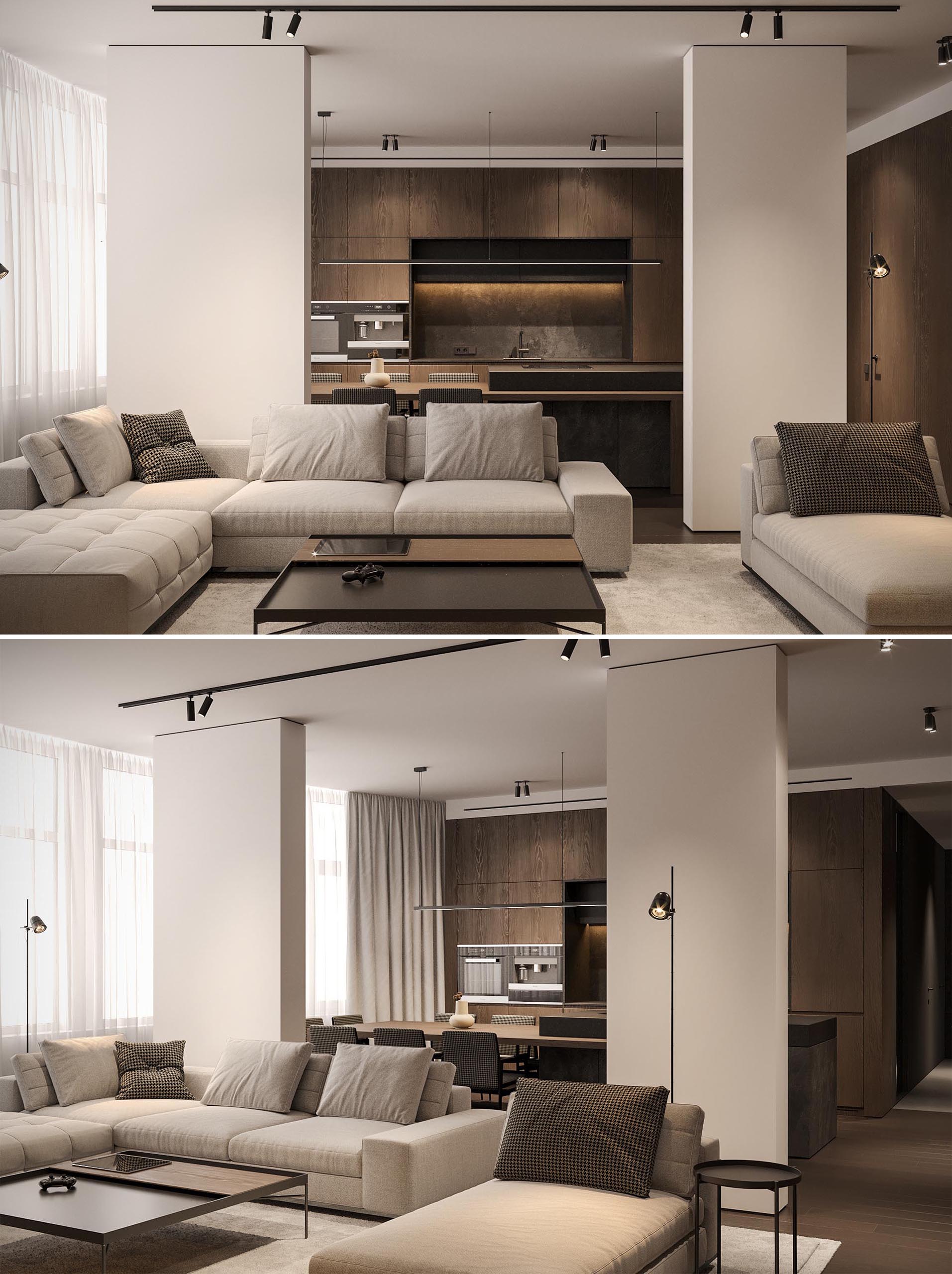
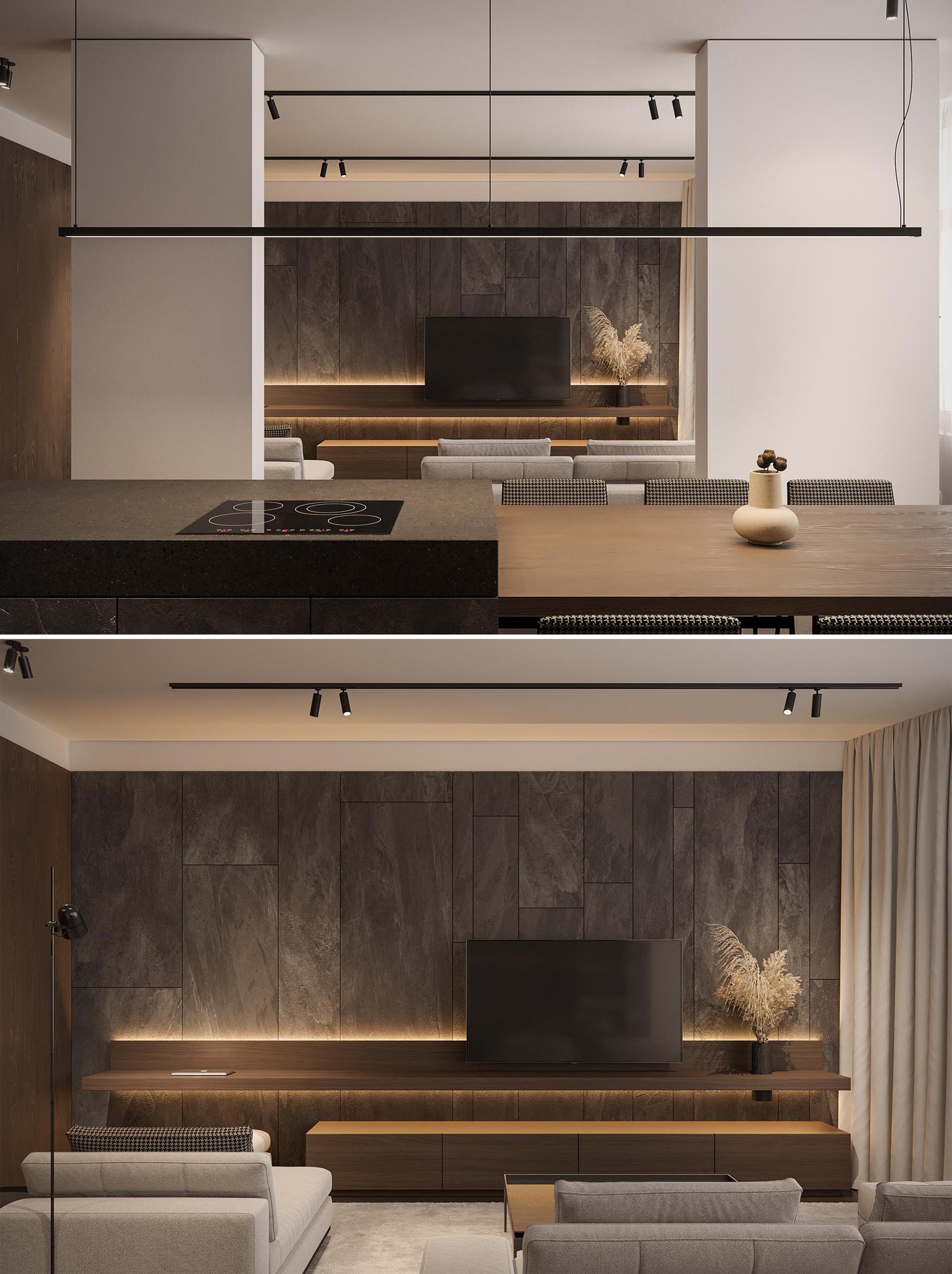
Hidden within a wood panel wall is a small home office with a built-in desk.
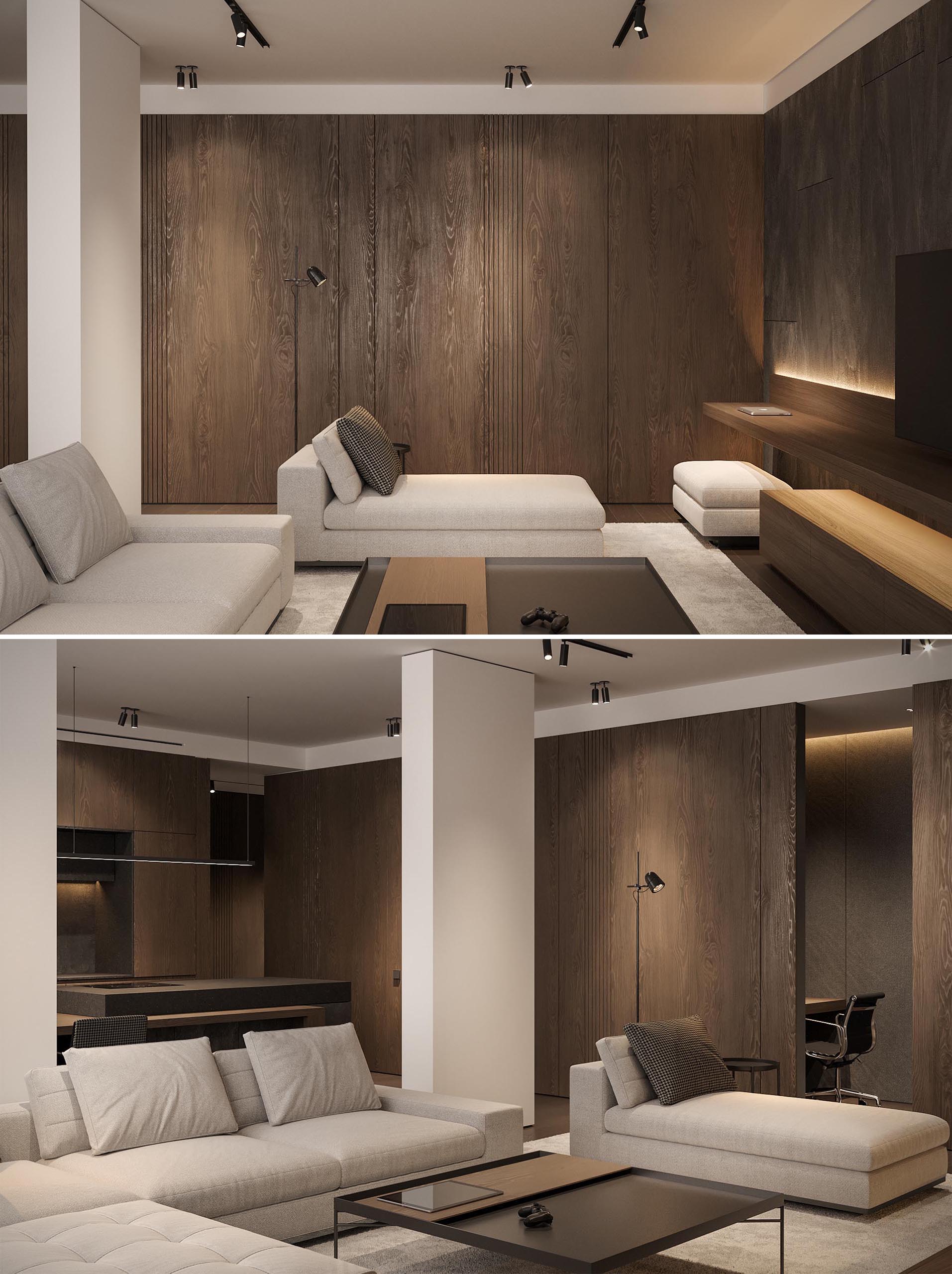
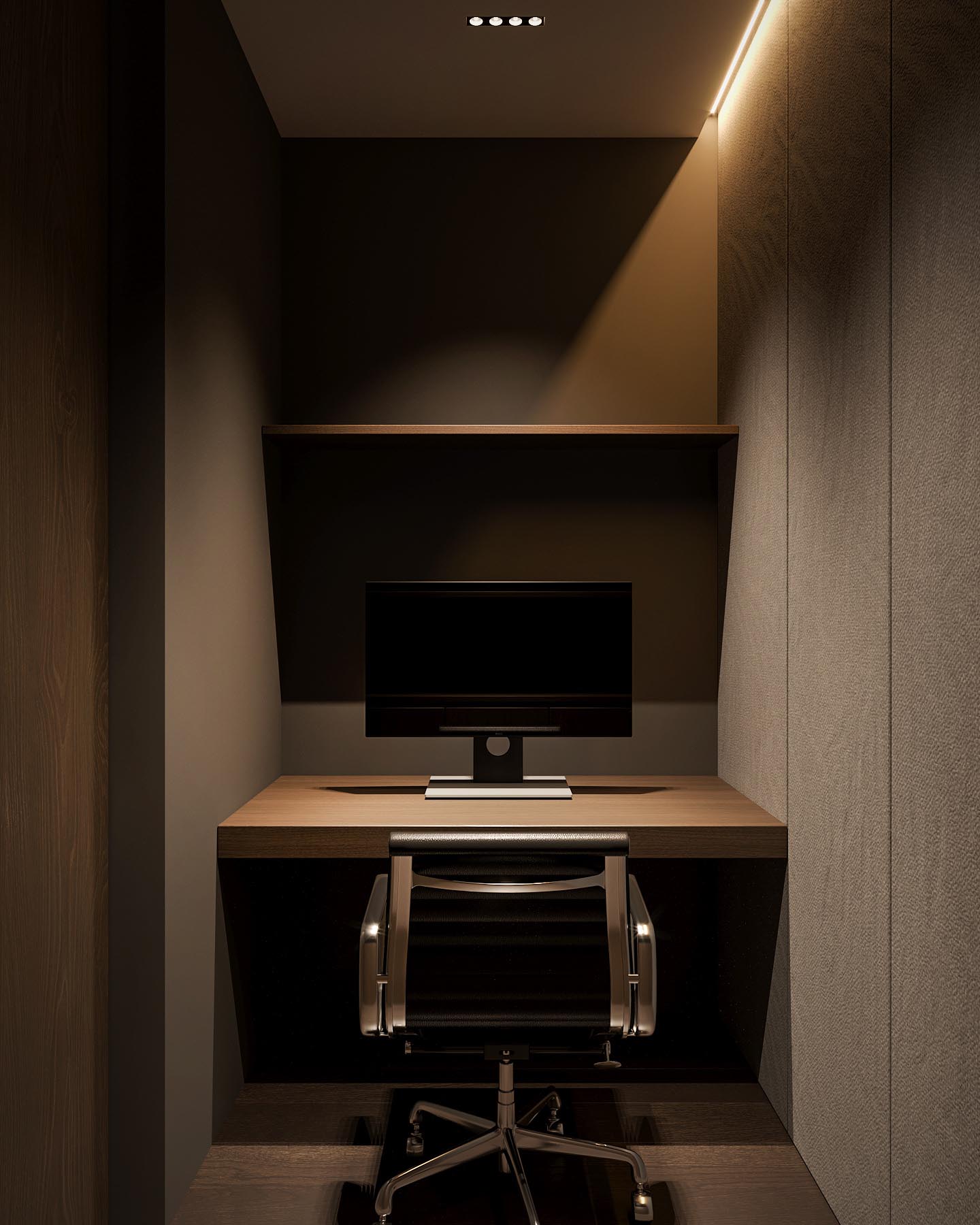
The home also includes other built-in desks, which can be found in the bedrooms. These home offices (or homework stations) are surrounded by bookshelves and closets, while the shelving with lighting complements the headboard lighting.
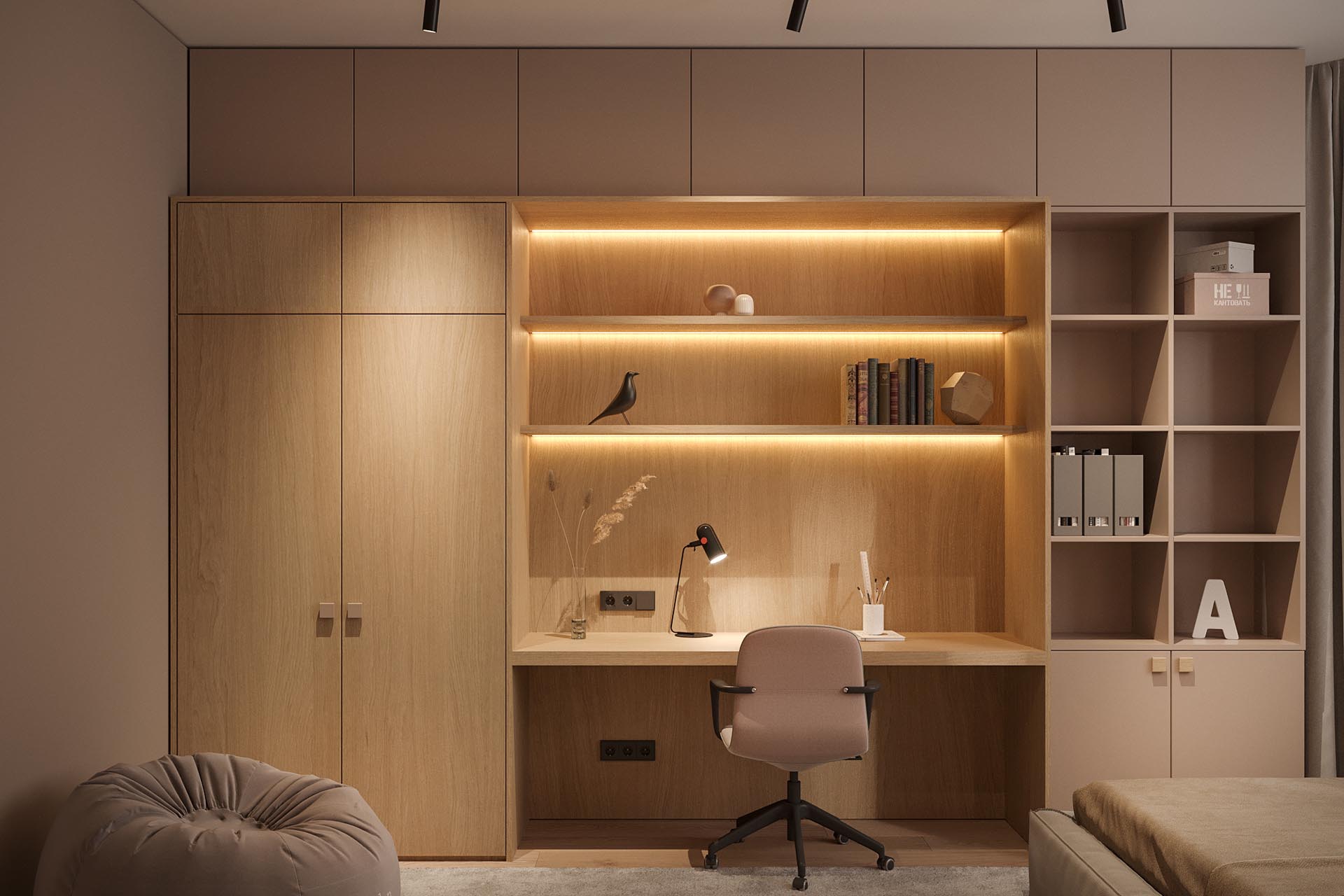
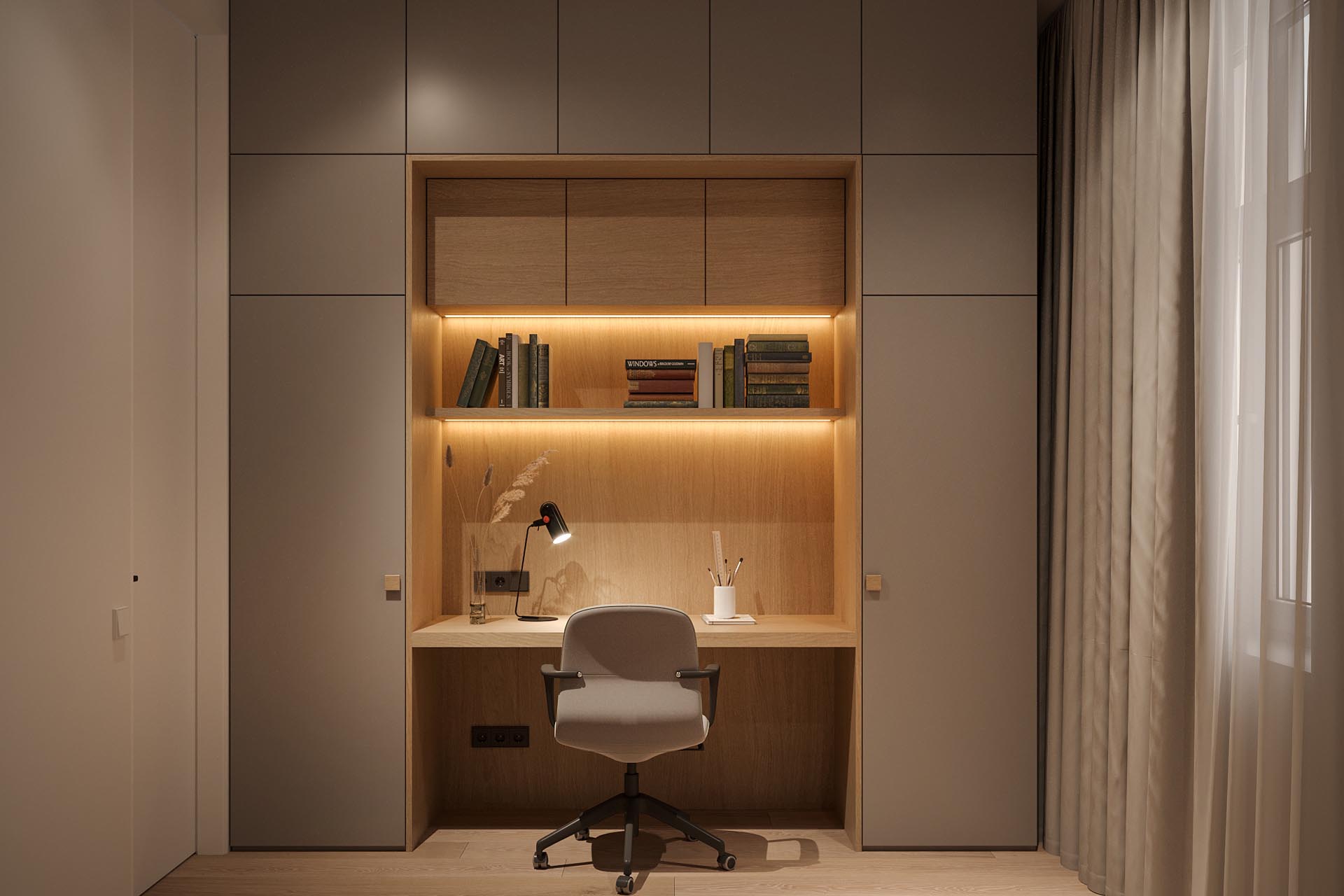
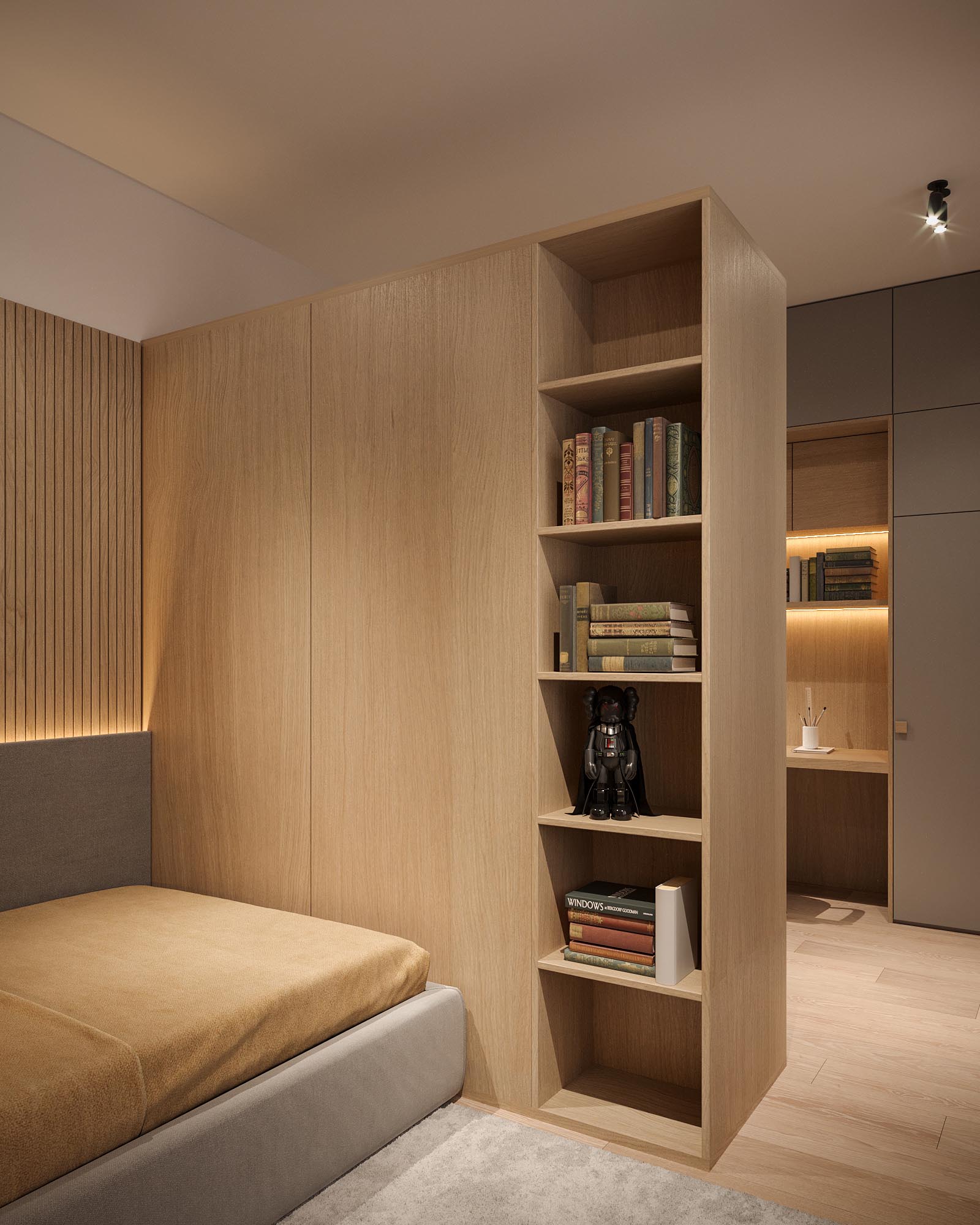
A built-in reading nook is lined with gray upholstered walls, making it a cozy and private space.
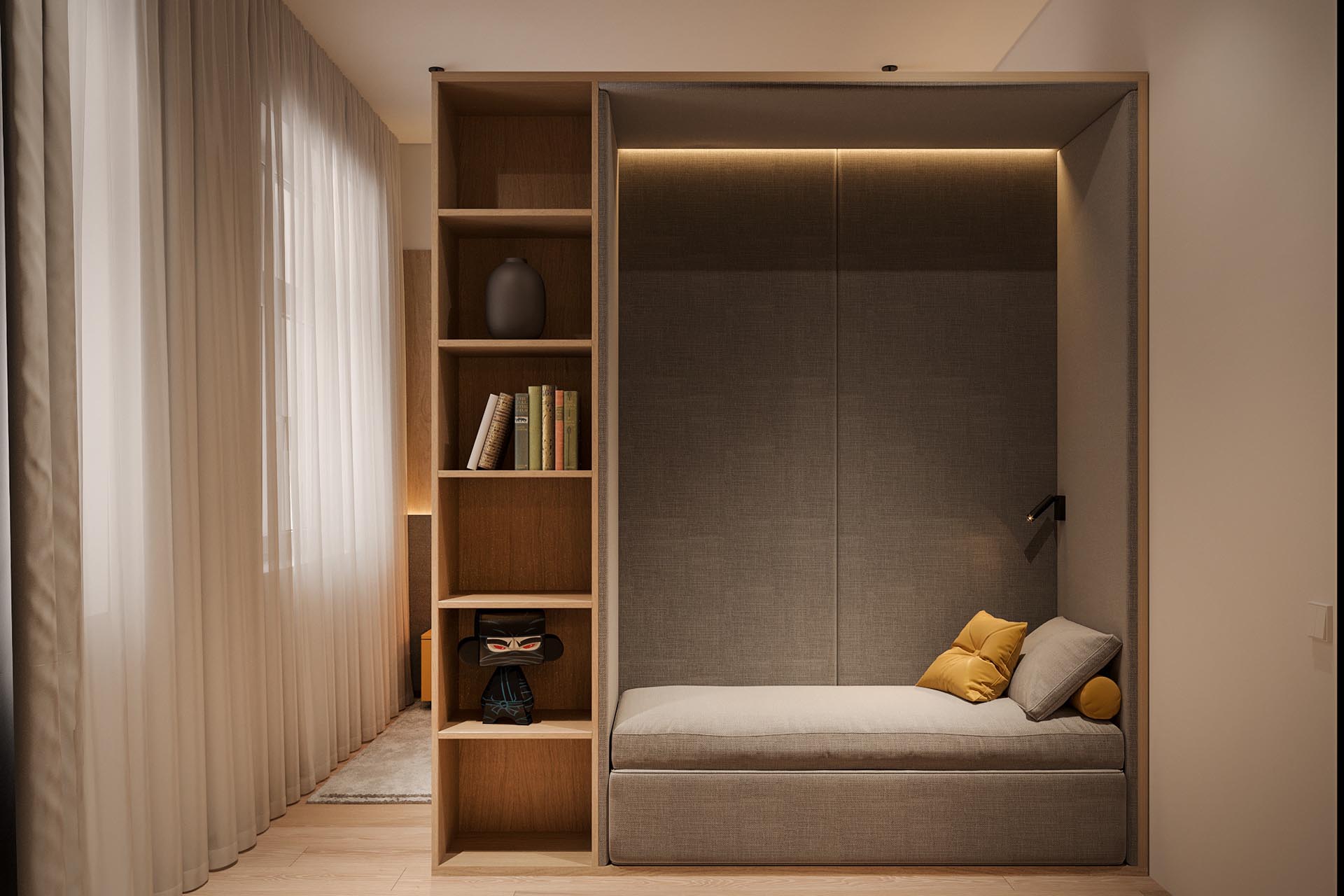
In the bathrooms, white vanities and large format tiles in neutral colors cover the walls and floors, and black accents like faucets and tinted shower glass create a contrasting element.
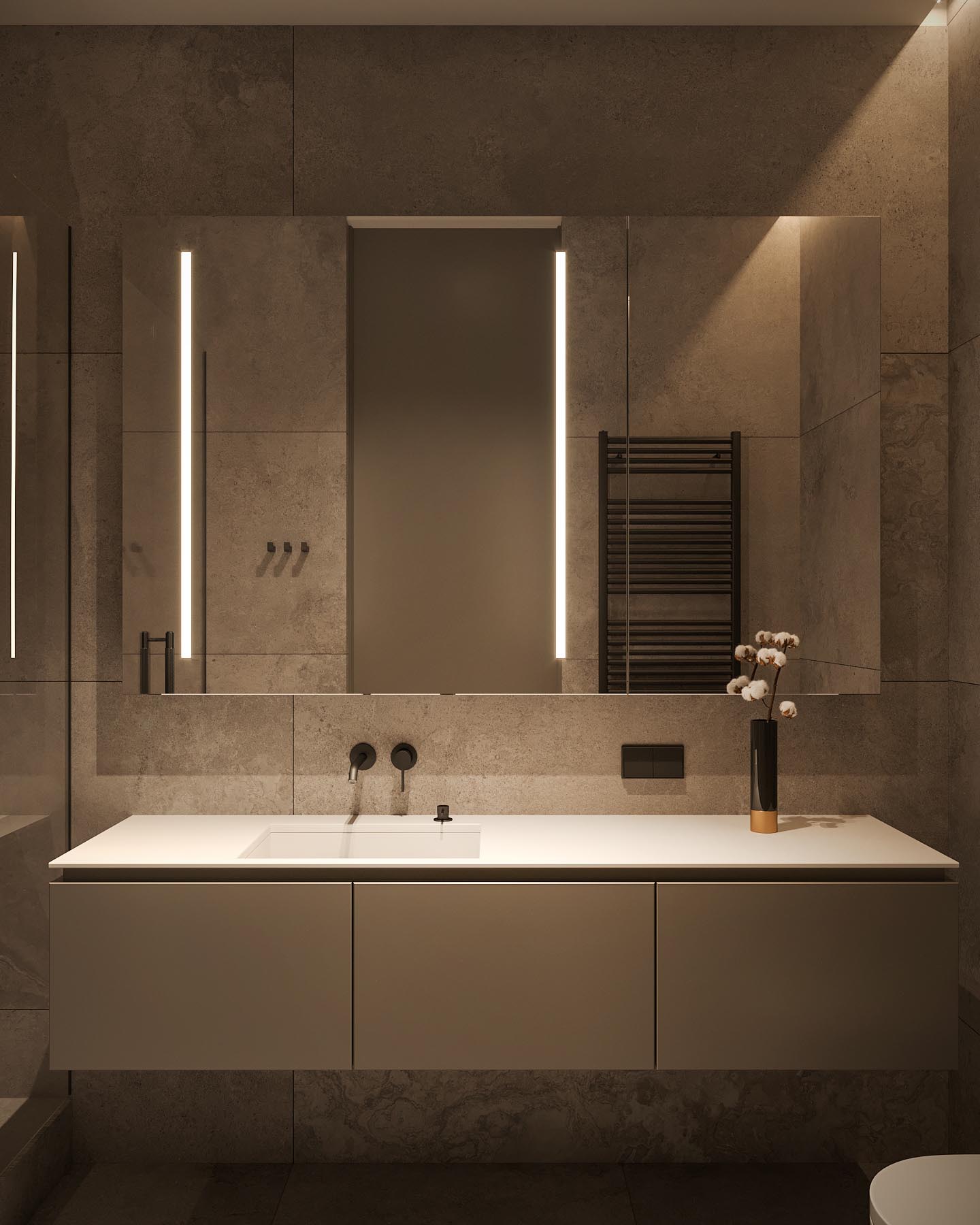
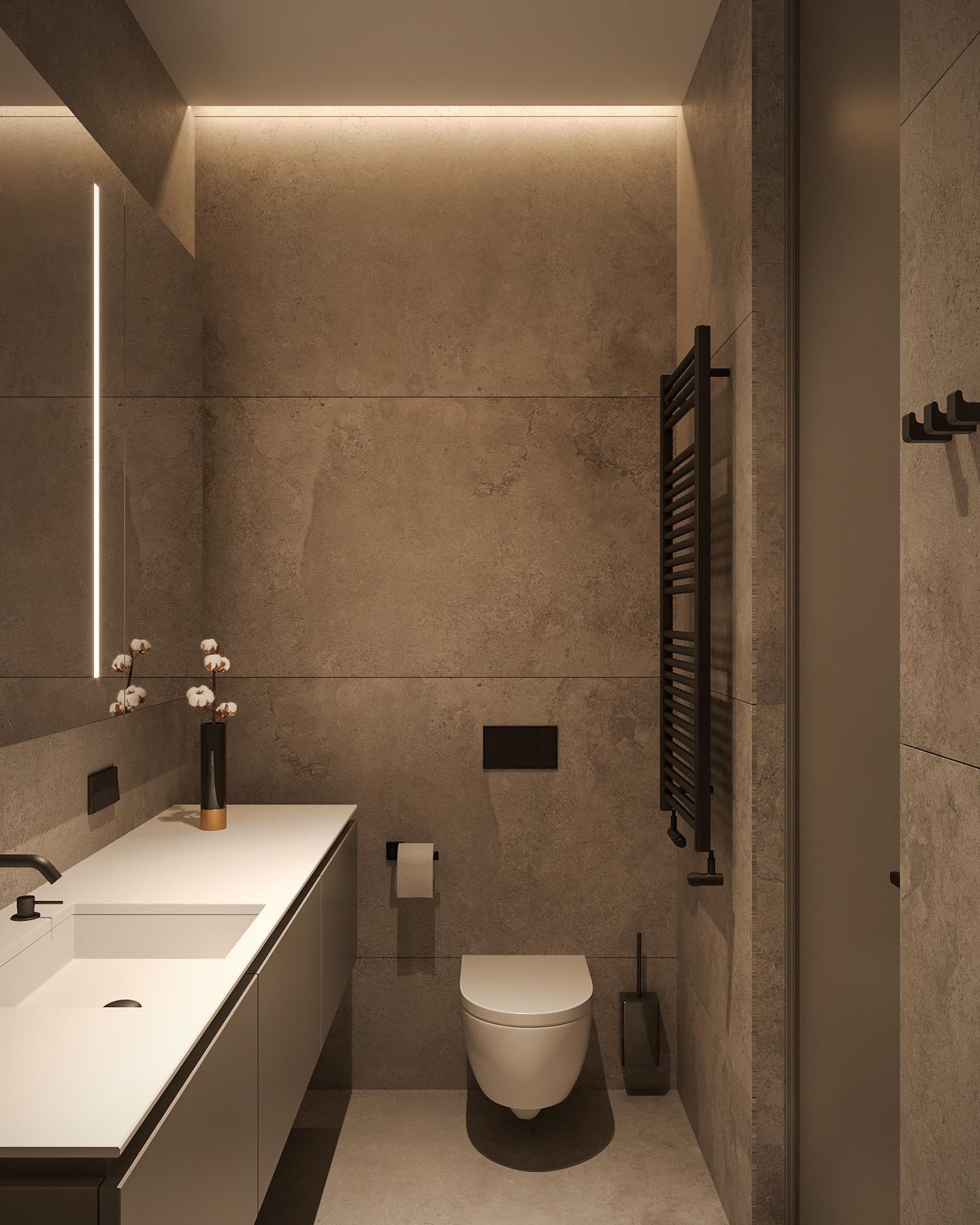
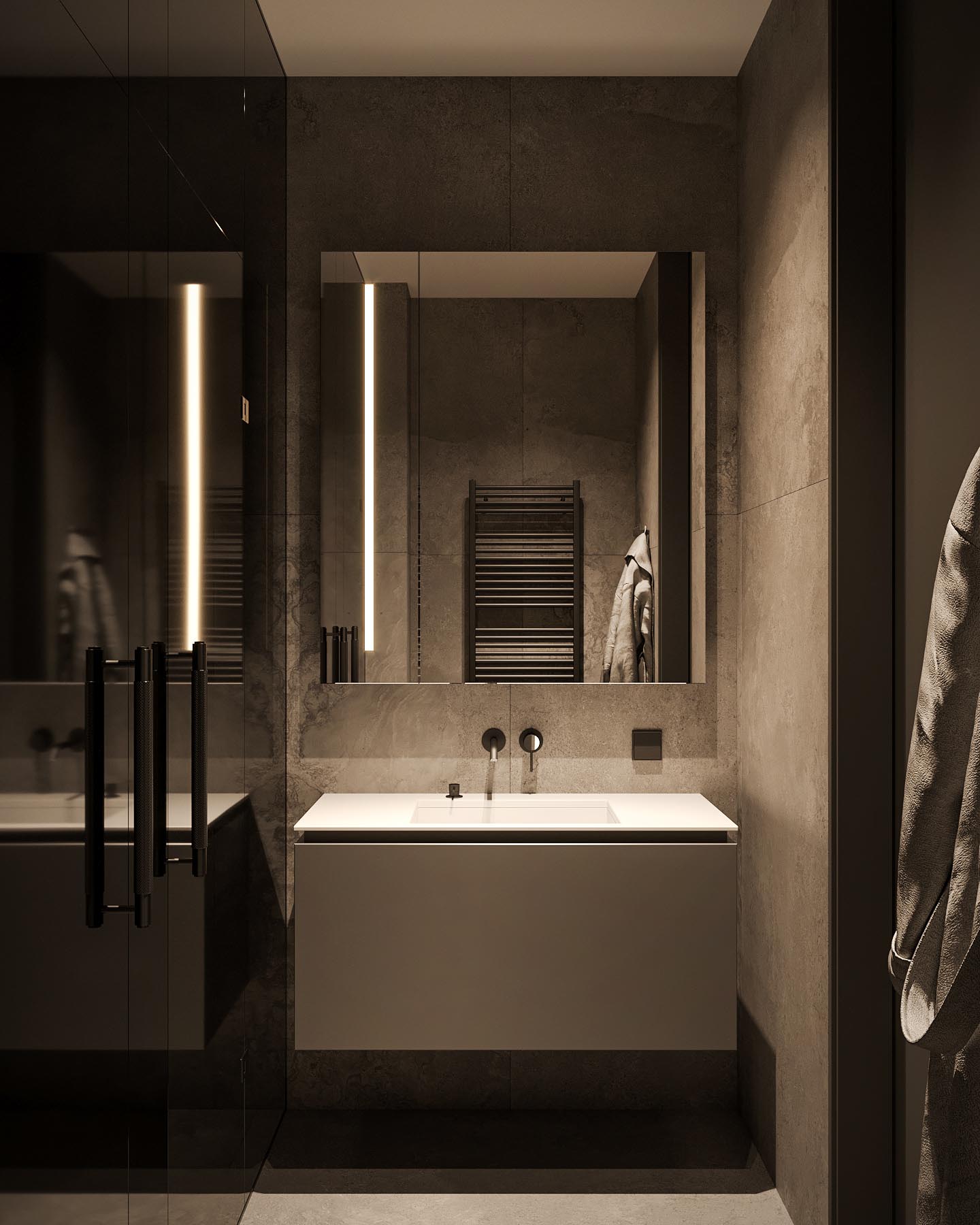
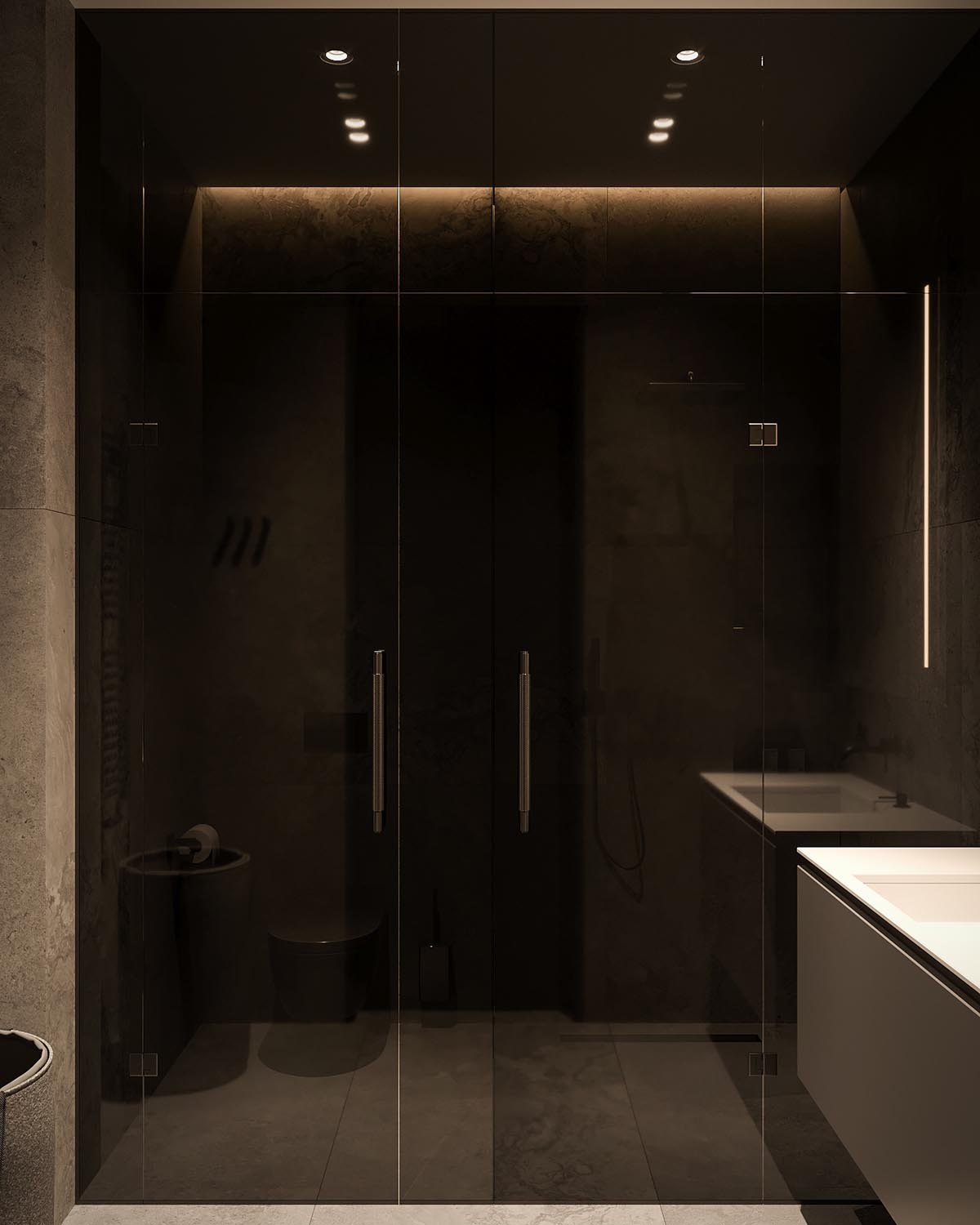
A Dining Area Was Included In The Design Of These Stairs
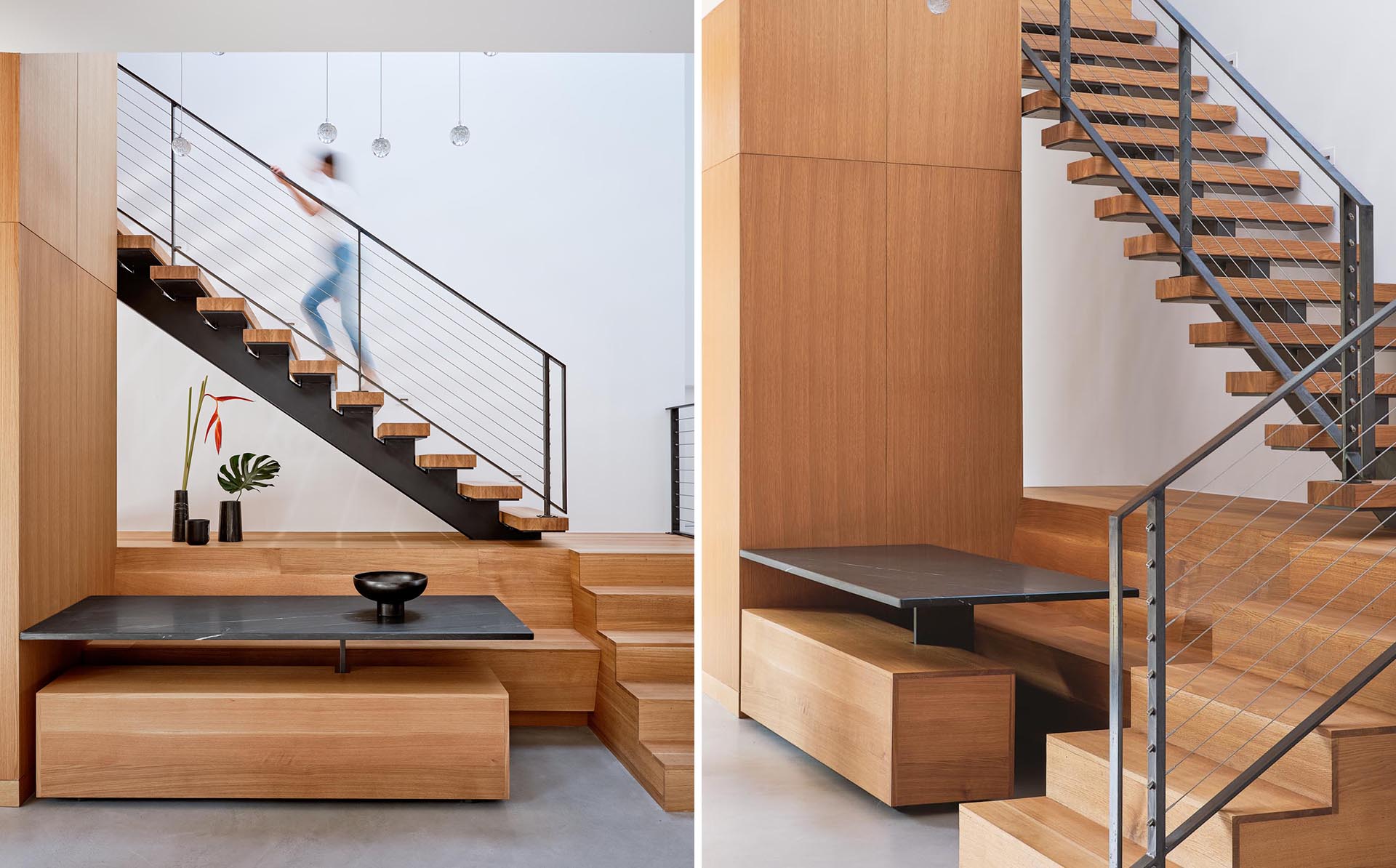
Matt Fajkus Architecture has recently completed a 950 square foot addition to a home in Austin, Texas, and included in the design, is a dining area that makes the most of the available space.
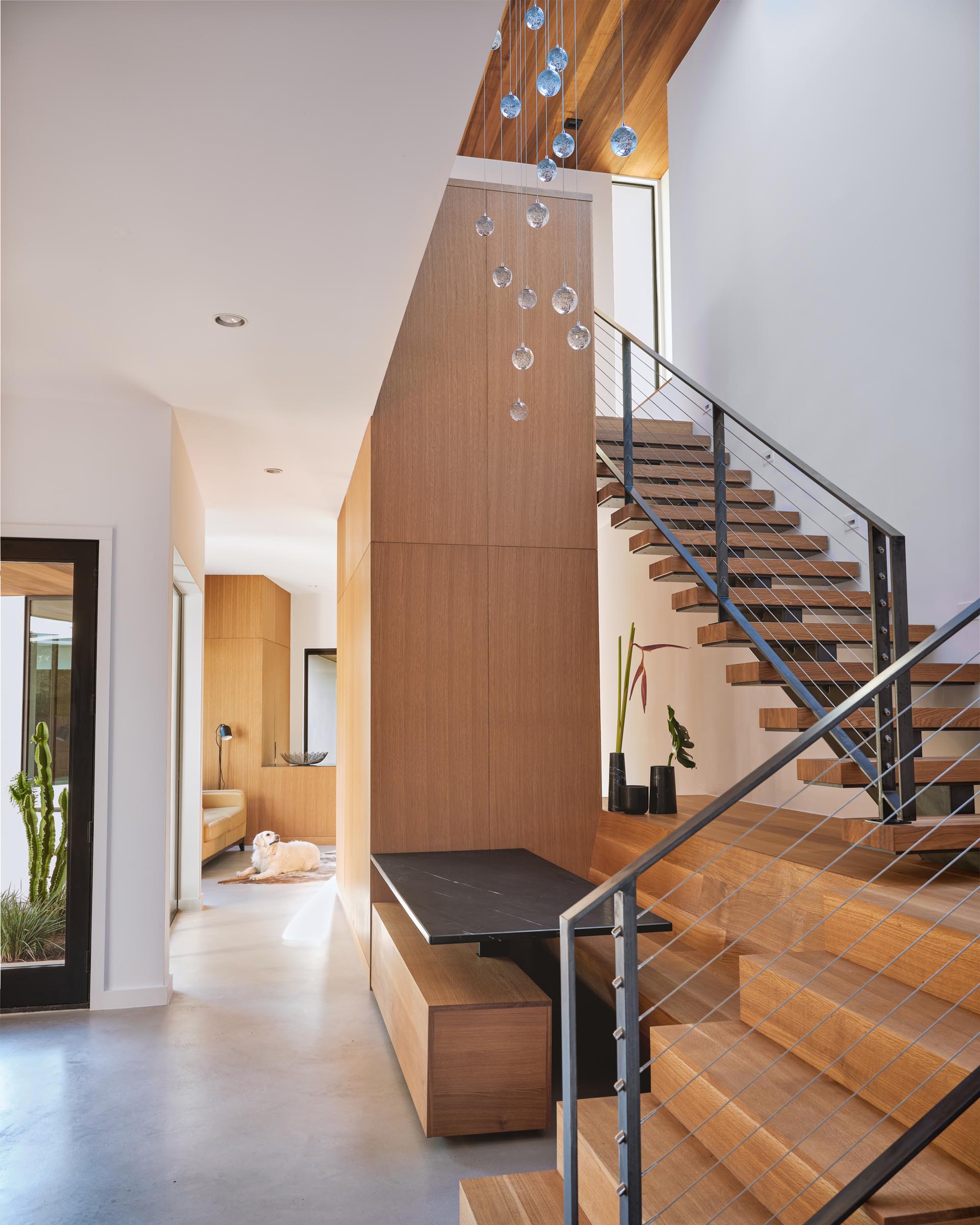
Usually, the space under the stairs is often left open in an interior, however this time, the designer decided to create a dining area.
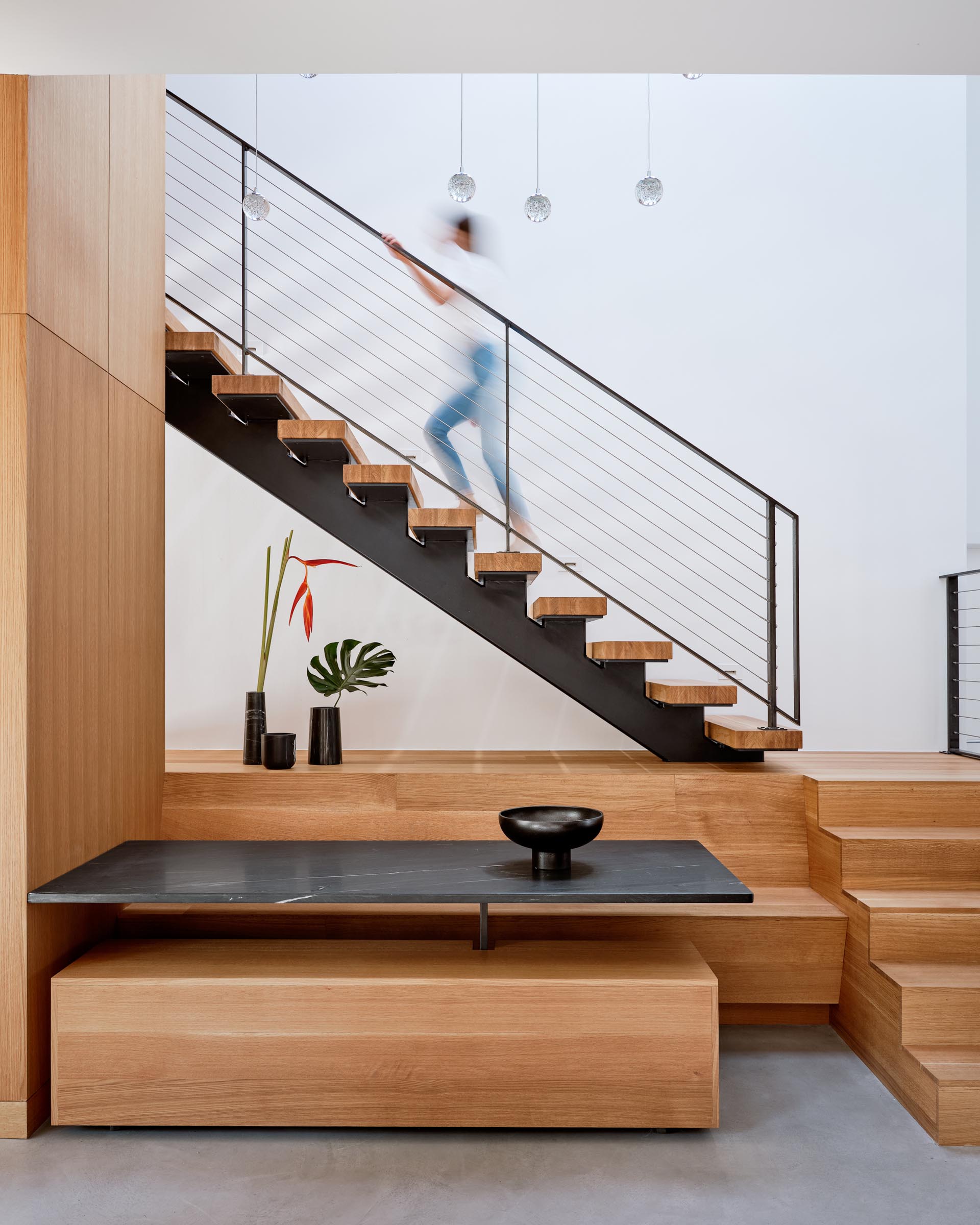
The dining area has two wood benches. The first bench has been built as part of the overall stair design.
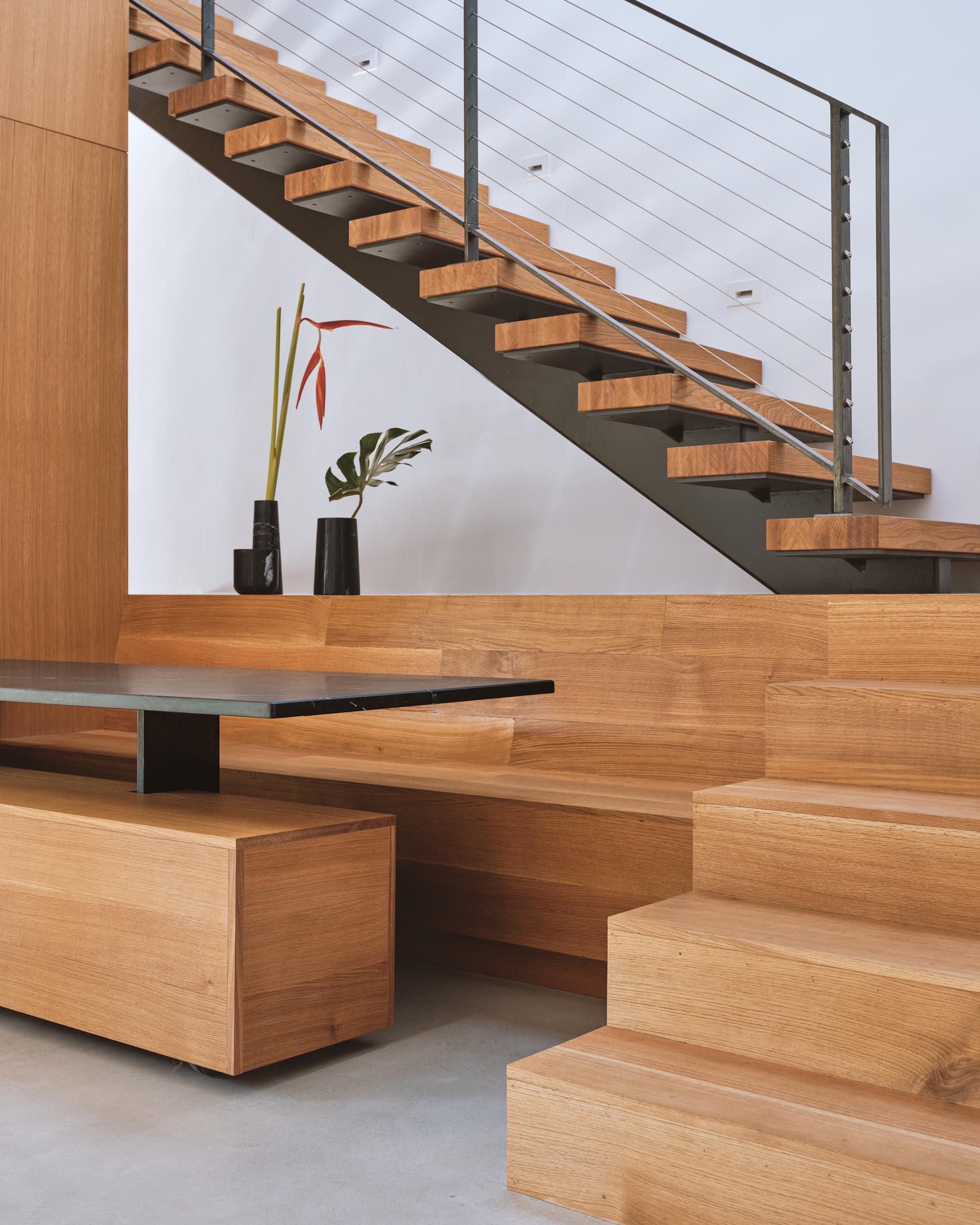
The second bench has been designed to be moved under the table when not being used, and it also lines up with the nearby wall and bottom of the stairs.
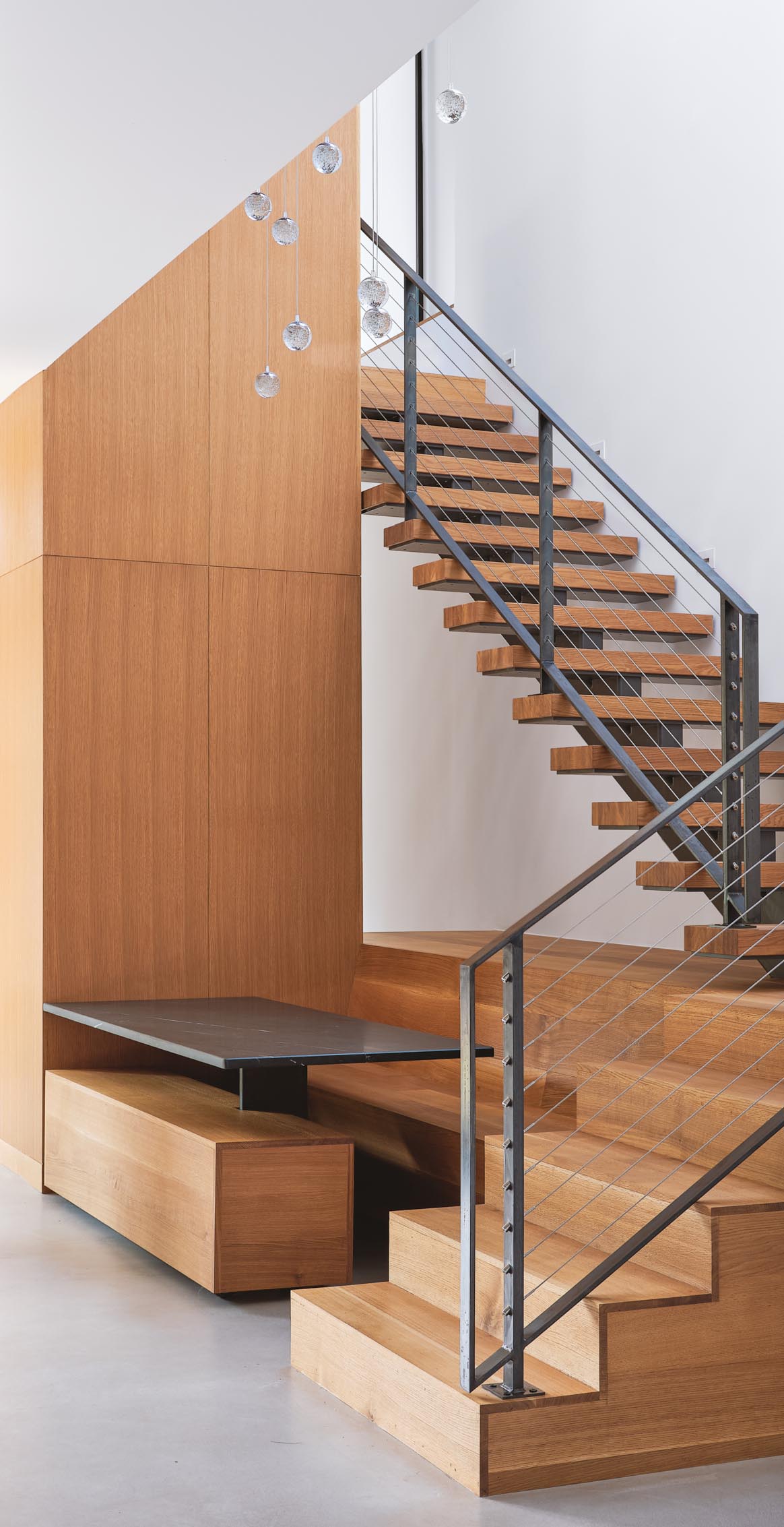
The dark table top complements the stair handrails and support structure.
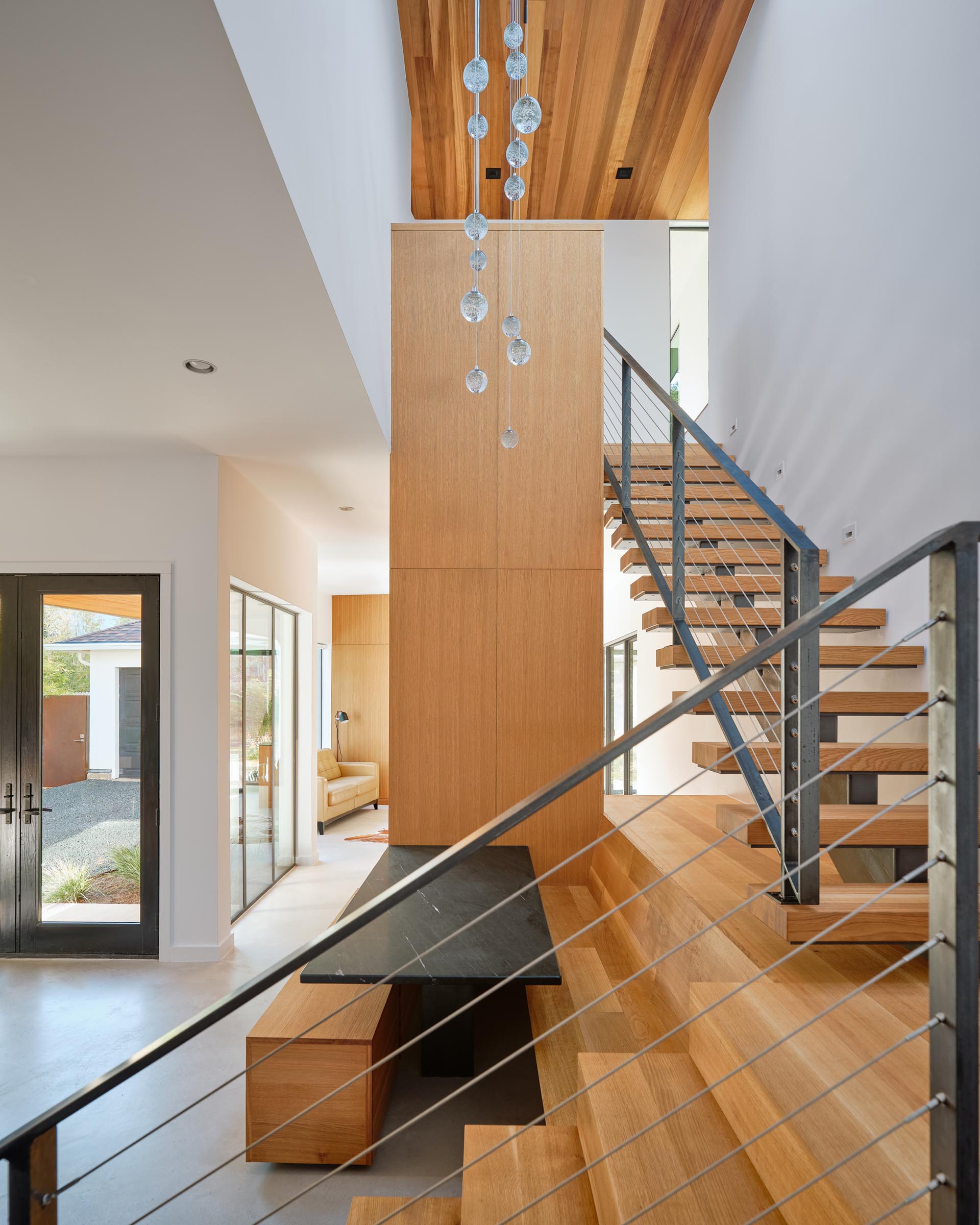
Here’s a look at more photos of the home, which includes the white stucco-clad, two-story addition to the generic 1980’s house, the new black window and door frames, the built-in window benches, and the skylights located above the stairs.
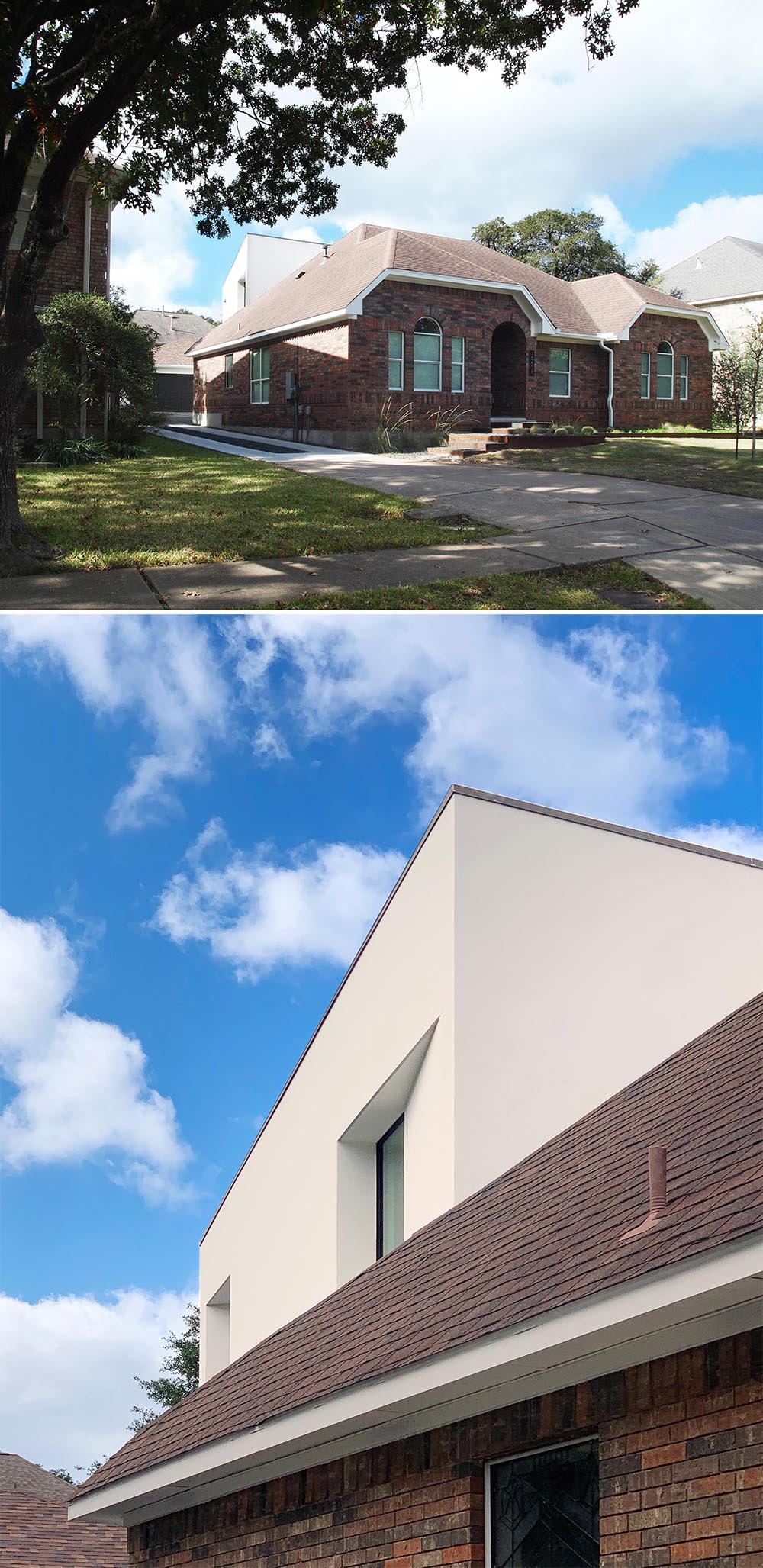
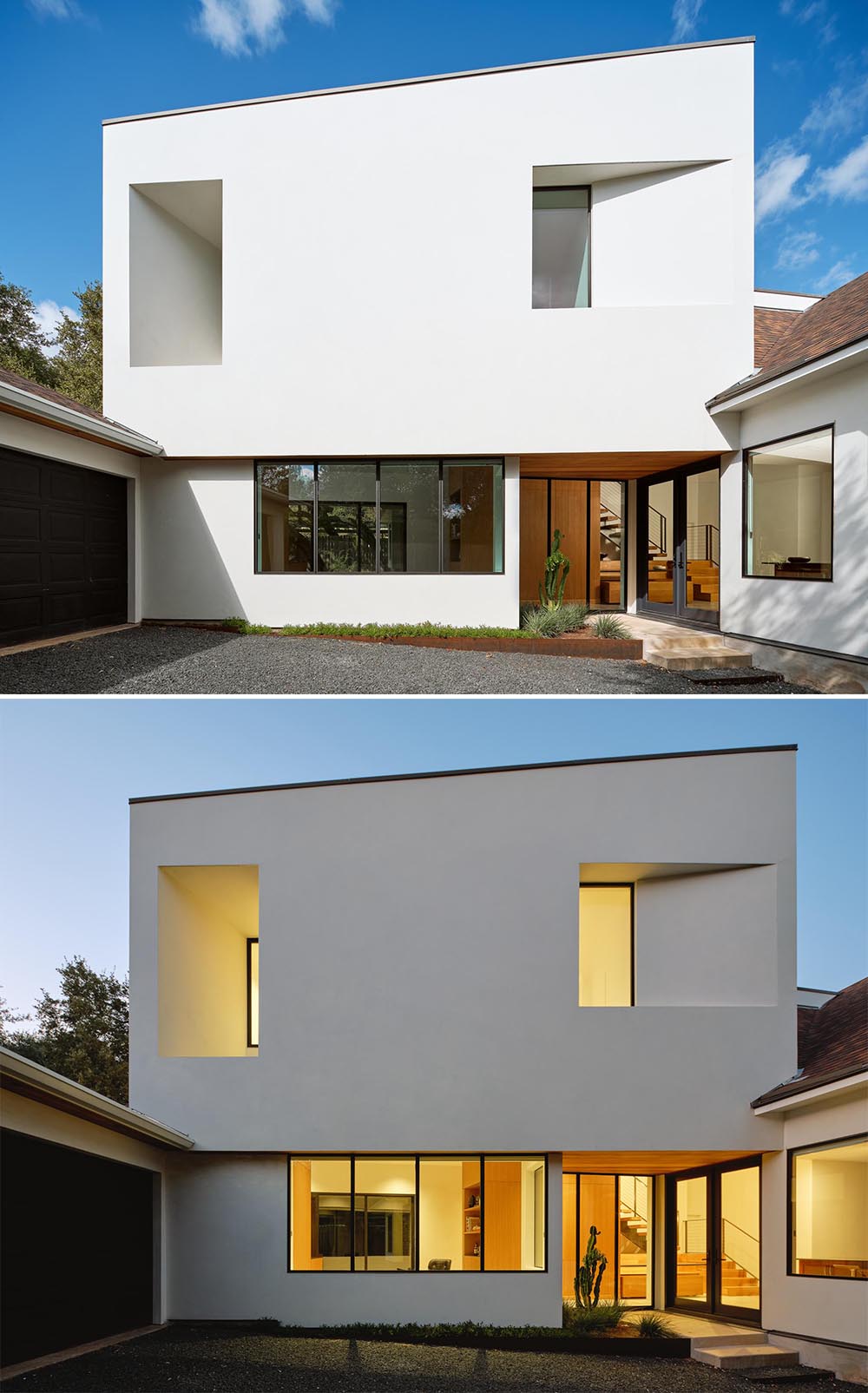
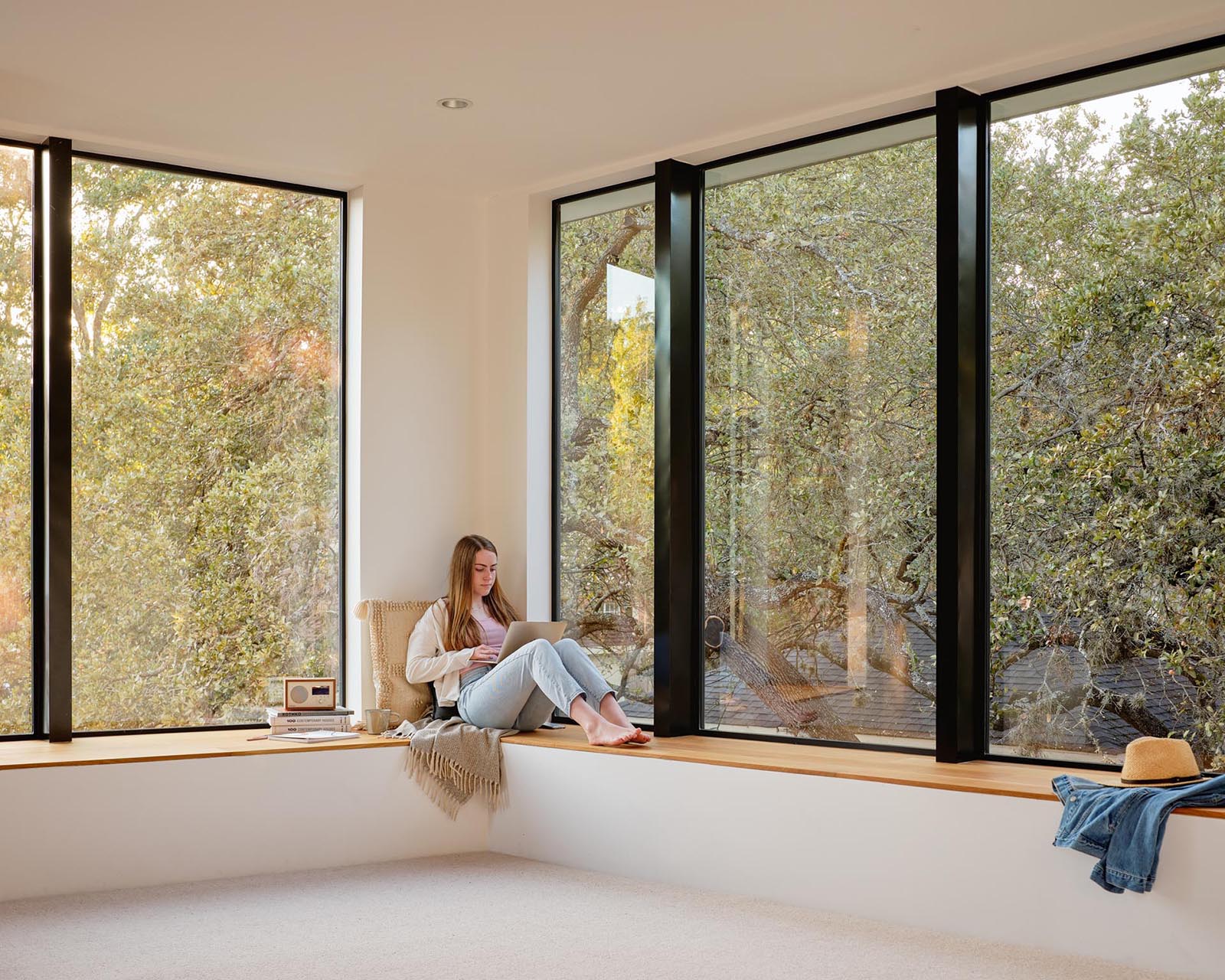
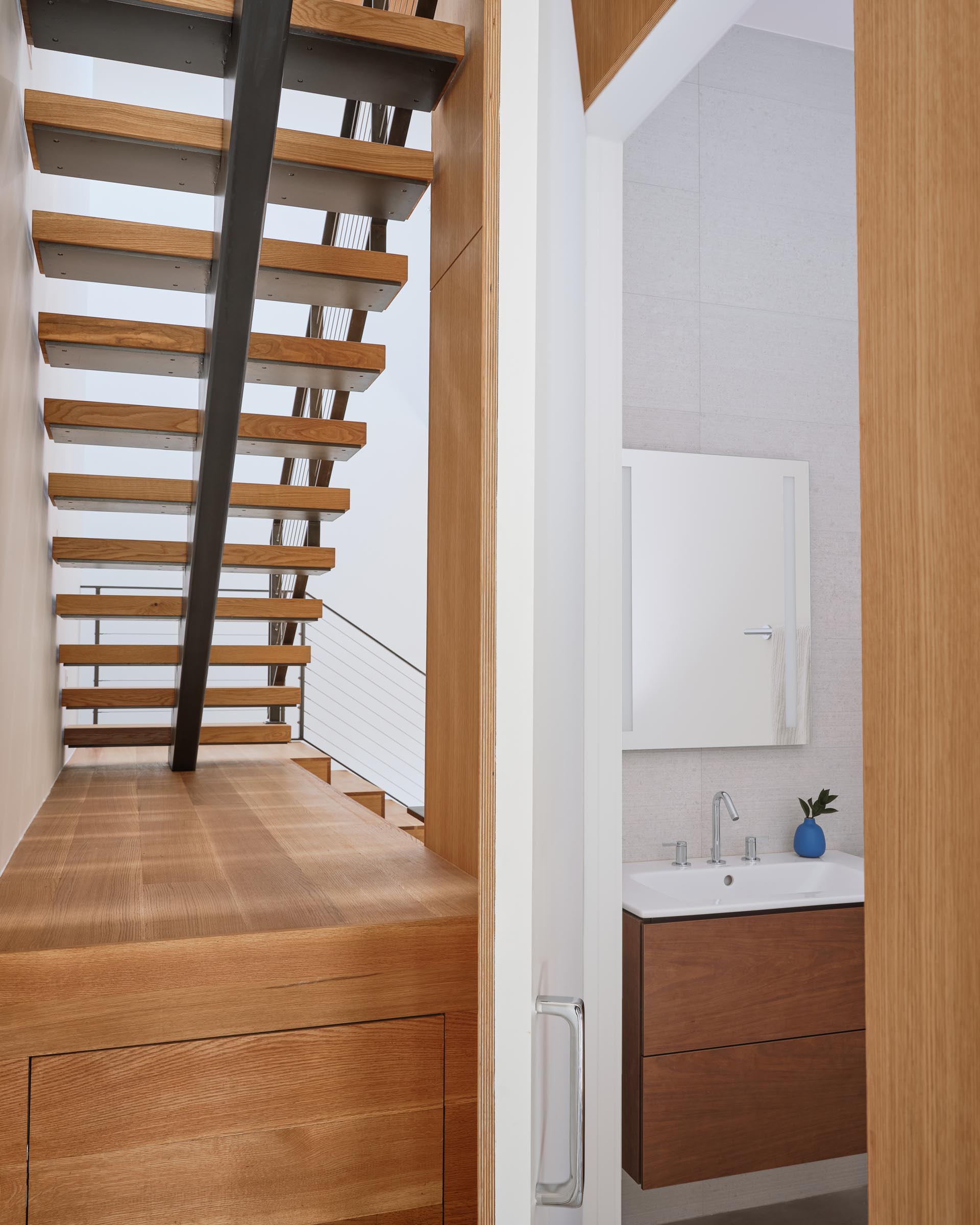
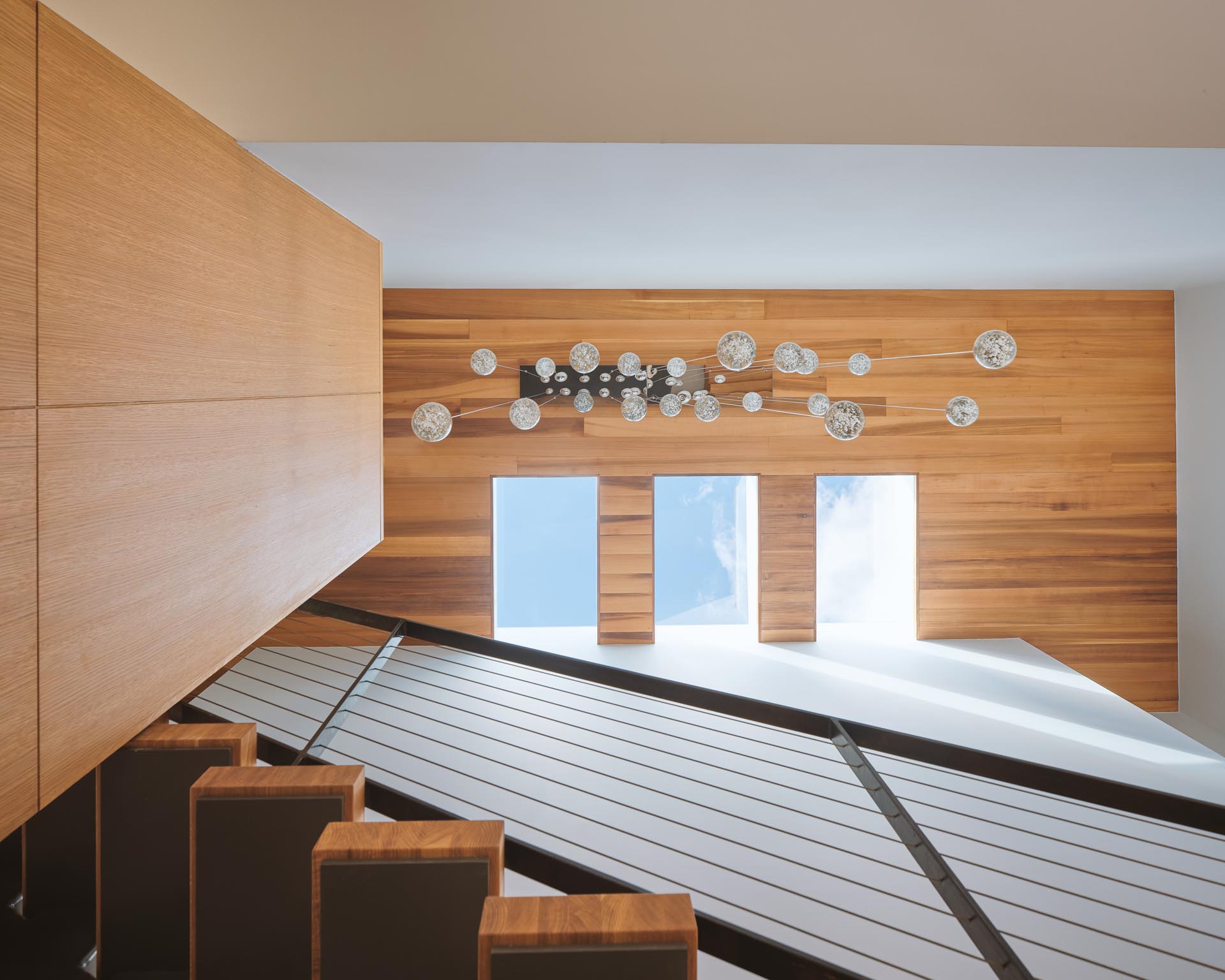
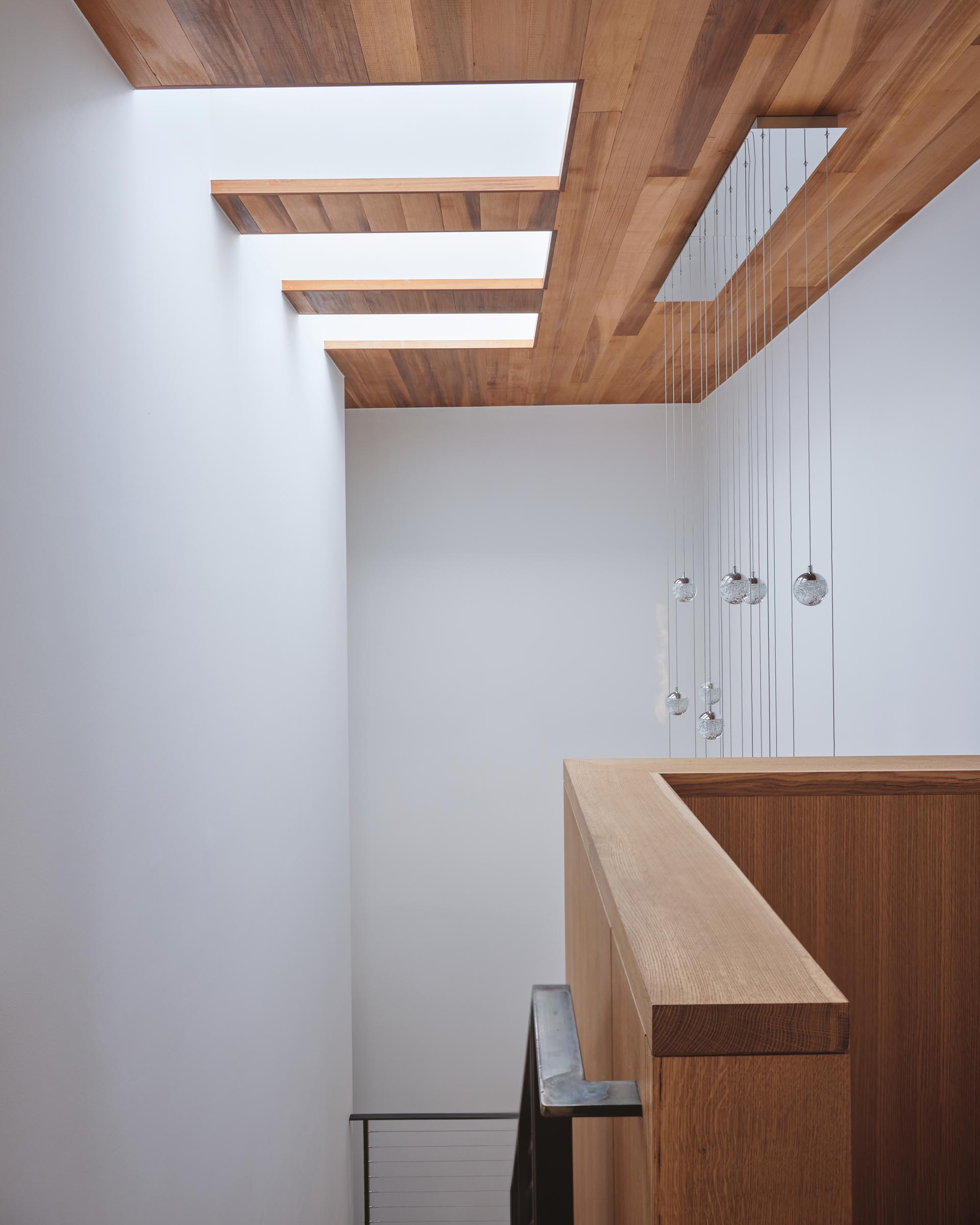
Photography: Leonid Furmansky, Matt Fajkus Architecture | Architect: Matt Fajkus Architecture | Architecture Design Team: Matt Fajkus, Sarah Johnson, Sarah Wassel, Andres Moguel, David Birt | Contractor: Texas Construction Company | Landscape: ADLA Studio
Minimalist micro-apartments in Seoul
Interior designer Ian Lee has lined the walls of the LIFE micro-apartments in South Korea with birch wood to offer tenants pared-back spaces that they can personalize.
Located in Seoul's Gangnam District, the apartments form part of a 16-story co-living building for young adults, developed by co-working-space provider Fastfive.
The block contains a total of 140 rooms, which vary between 16 and 23 square meters in size, alongside shared living areas that Vancouver-based Lee also designed.
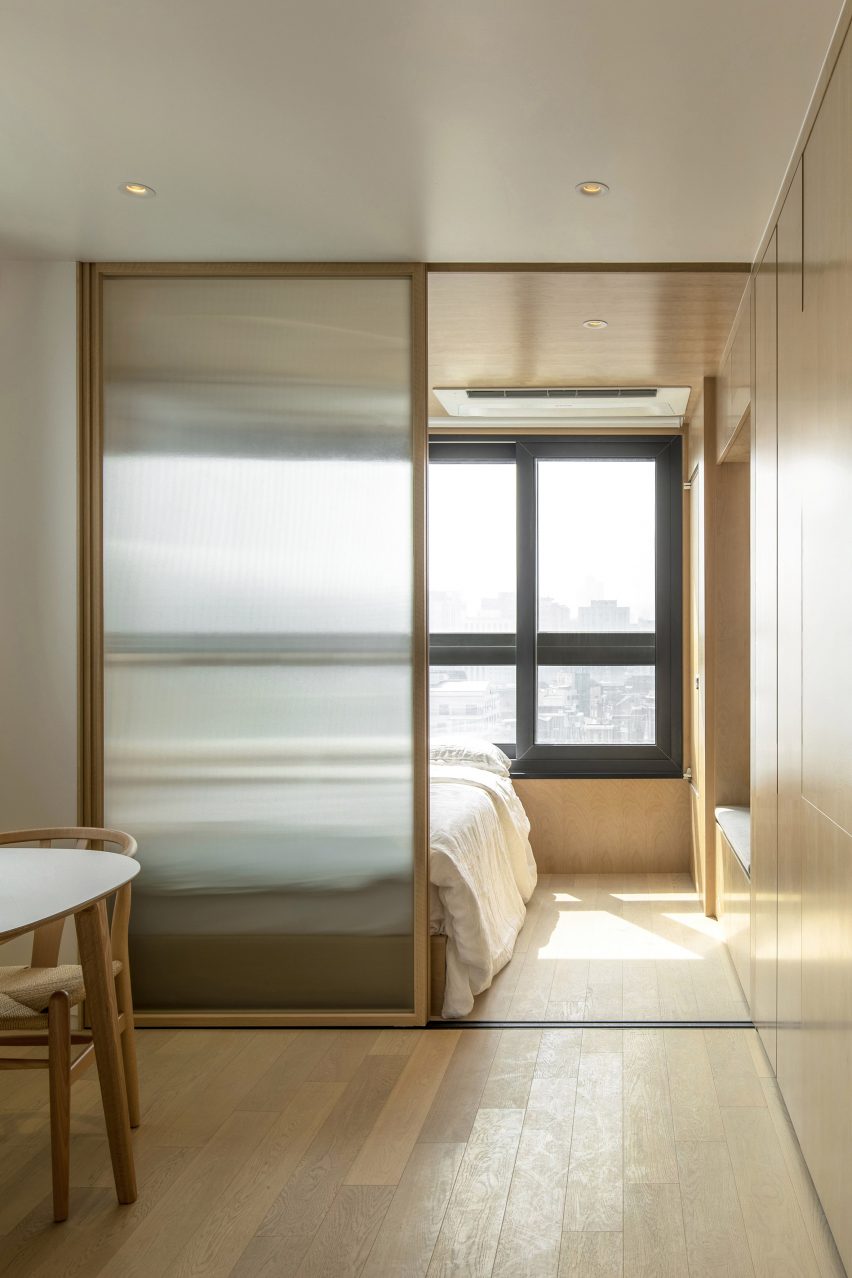
Lee's goal for the LIFE apartments was to create deliberately simple, timeless interiors that were visually uncluttered.
While helping to distract from the small size of the rooms, this offers tenants the opportunity to create homely, private spaces with their own furniture and belongings.
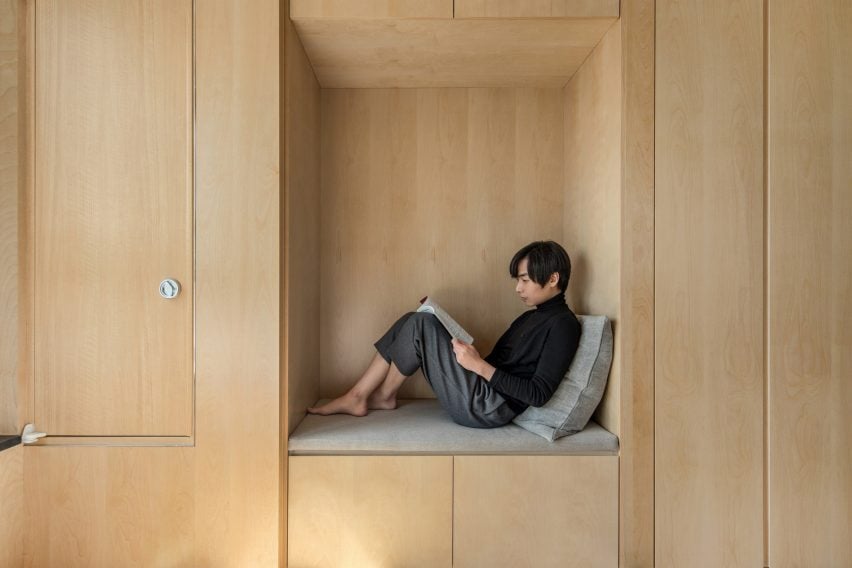
"Like in many densely populated cities, most young adults in Seoul struggle to find homes as housing prices climb," explained Lee.
"I wanted this co-living space and the community it would build to be an accessible alternative to traditional housing options that can eventually give its residents a sense of belonging."
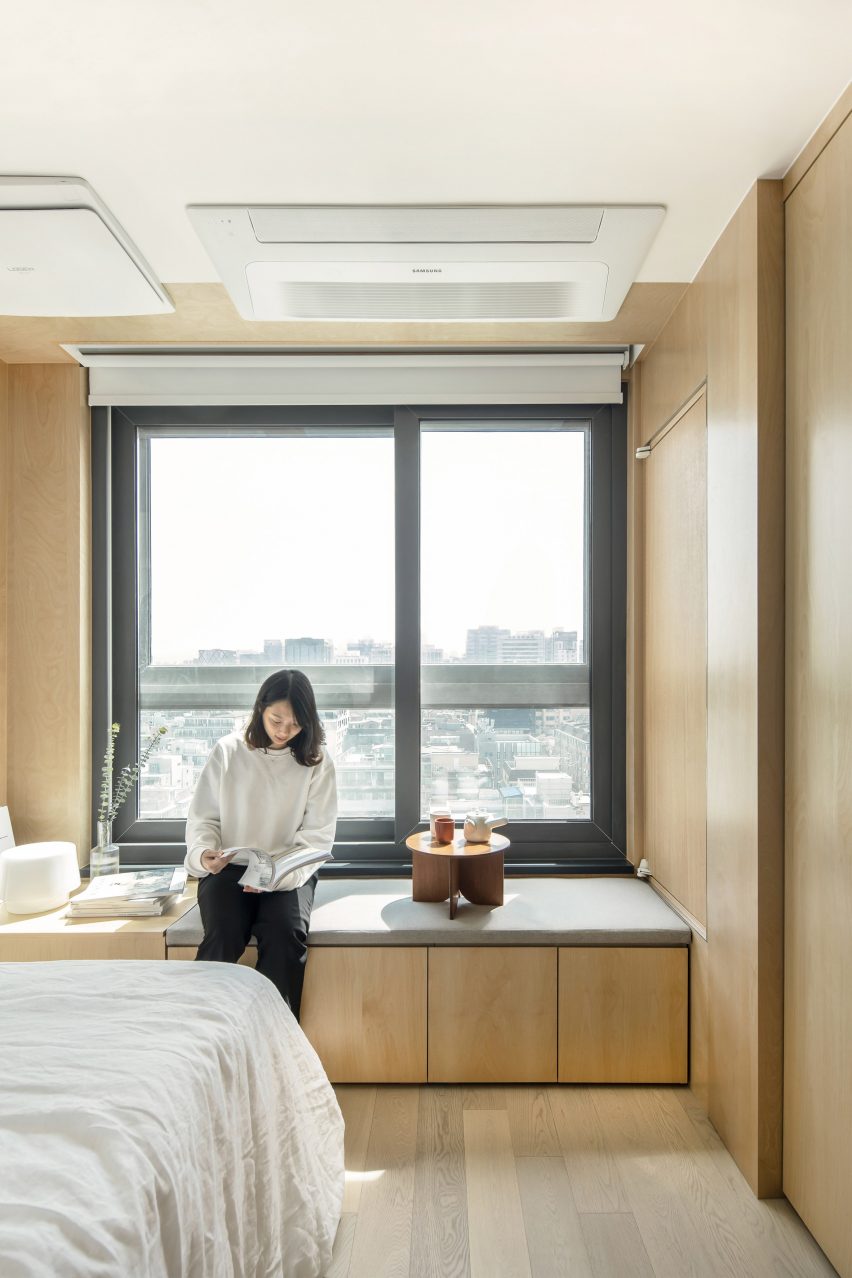
"One of my aims in designing these rental units was to find that balance, where the space feels timeless and comfortable as it is, but also like a blank canvas for tenants to personalize," Lee continued.
"The overarching goal was to evoke a sense of home."
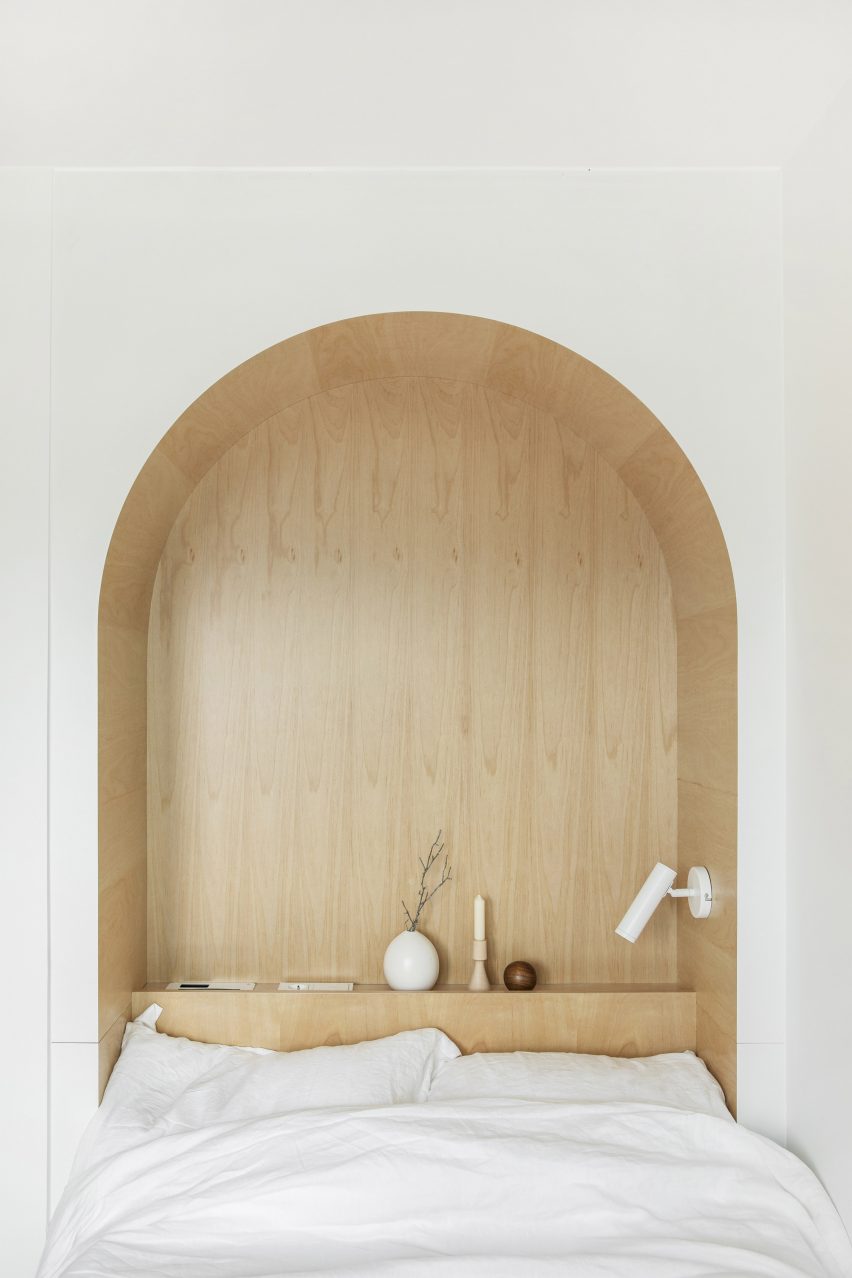
Each apartment is fully equipped with a private kitchen and bathroom, with storage and appliances built-in or hidden within the birch-lined walls to maximise useable space.
Some units are fitted with sliding glass partitions that can be used to divide the flats offering tenants flexibility while ensuring natural light can still filter through.
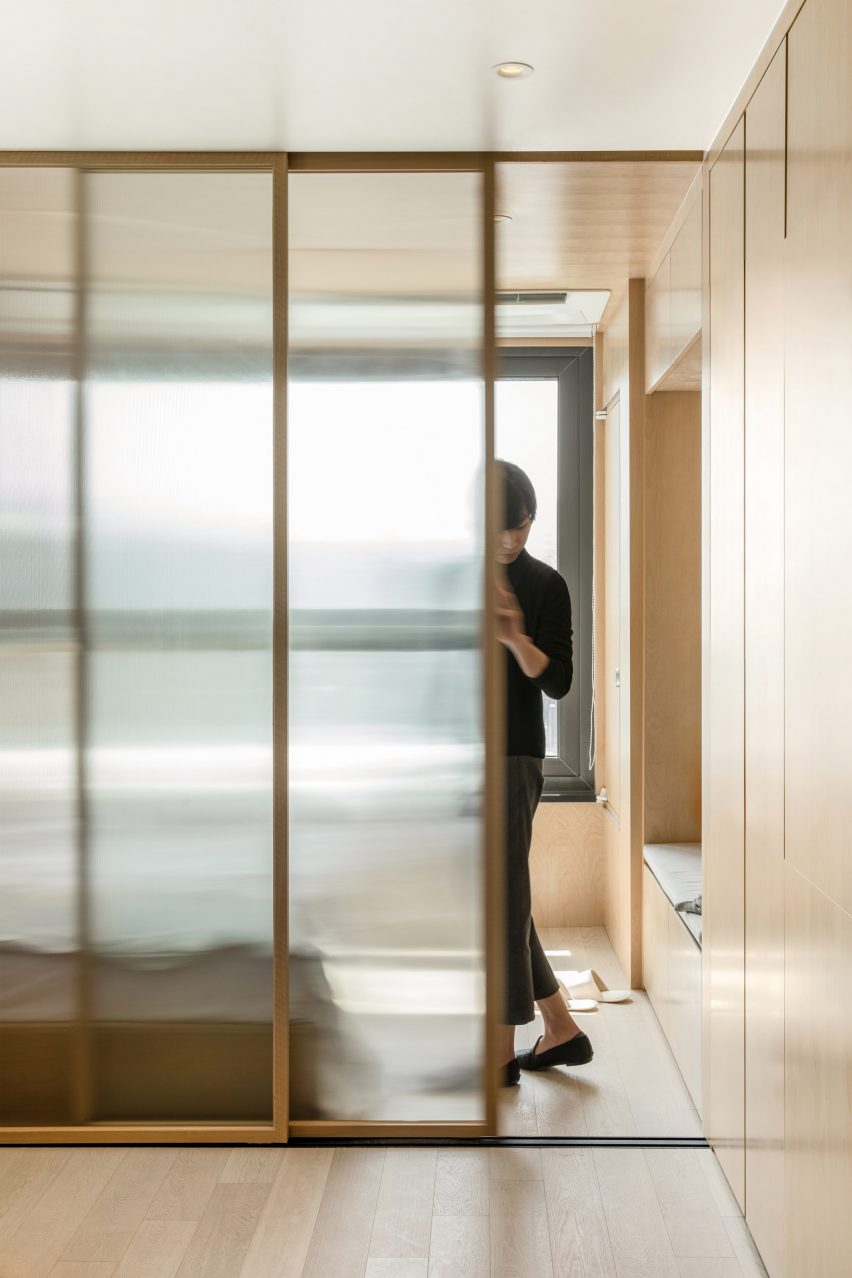
Lee chose birch as the main material for the micro-apartments to create a cozy finish, but also because the material forms a neutral backdrop for furnishings.
The only decorative elements he has included are playful arched cut-outs, reading nooks, and window seats, which he hopes contribute to the cozy aesthetic."Rental homes can feel generic, cold, and utilitarian," Lee explained. "The soft spatial elements like arches and curves were used to infuse warmth and emotions into the rooms."
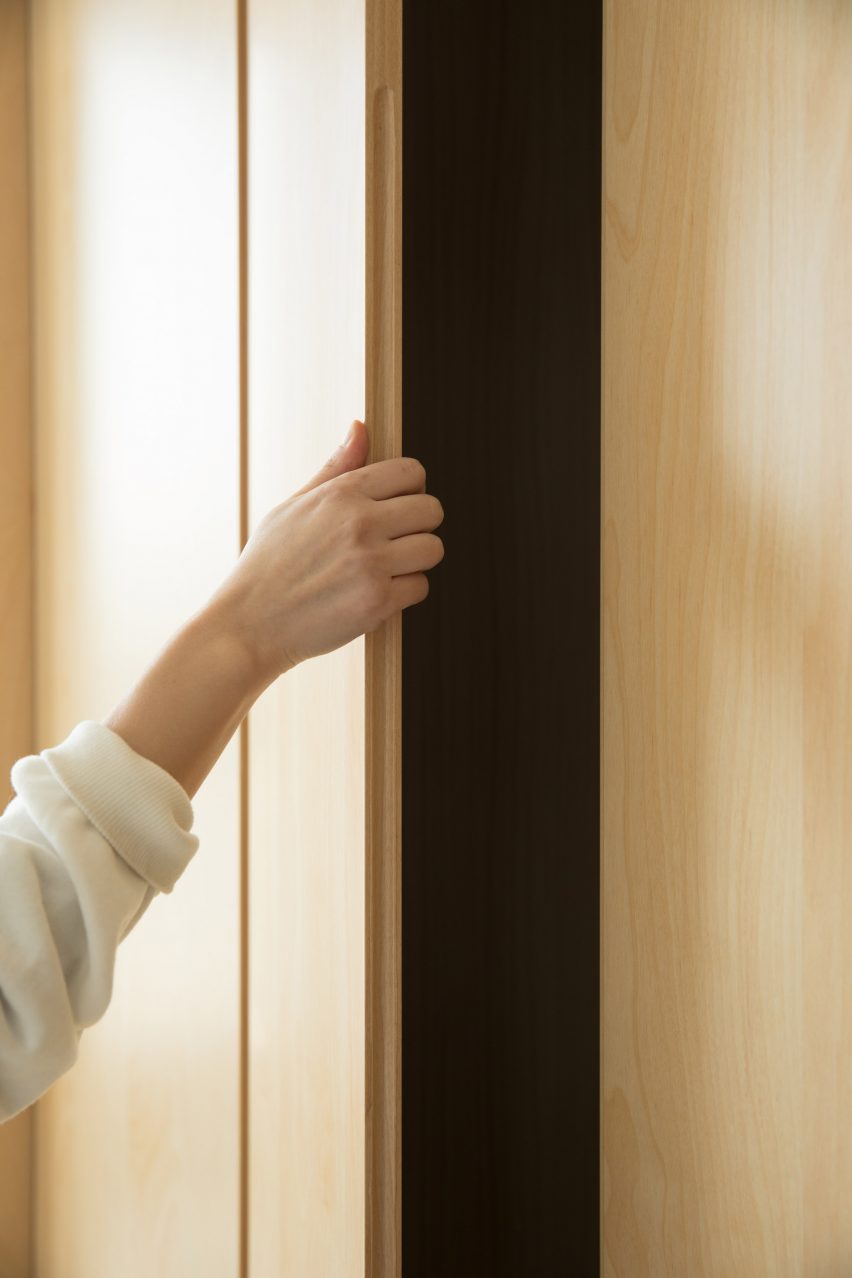
The shared living spaces, which were not photographed, include a communal kitchen, workspace, lounge, gym, and rooftop garden.
Finished with an equally minimalist design, these are hoped to help foster community amongst tenants.
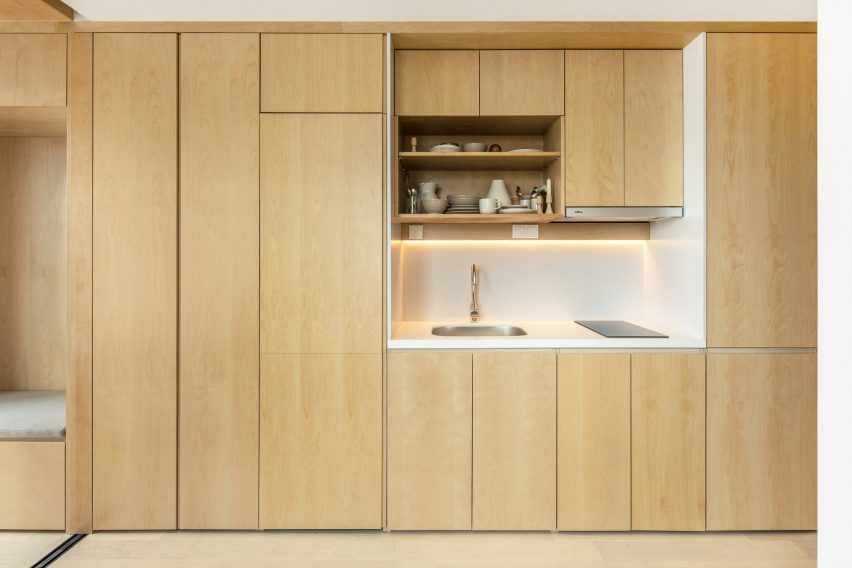
Other micro-apartments on Dezeen that feature wood-lined interiors include A Little Design's 17.6-square-meter residence in Taiwan, which features built-in, space-saving furniture.
Elsewhere in Taiwan, the studio also designed a 22-meter-square apartment with storage spanning one entire wall, covering 3.3 meters from floor to ceiling.
Photography is by Texture on Texture.
10 calming green kitchens that bring natural tones into the home
For our latest lookbook, we've rounded up ten fresh and airy kitchens that use shades of green to give a hint of the natural world.
From soft sage to bright emerald, green is this year's kitchen color trend, often paired with natural local materials.
Perhaps inspired by our craving for nature during the pandemic, calming sea greens, grassy hues, and mossy stones are popular choices for kitchen cabinetry, walls, or tiles.
Belgium Apartment, Belgium, by Carmine Van Der Linden and Thomas Geldof
Local architects Carmine Van Der Linden and Thomas Geldof designed this duplex for a coastal location surrounded by sand dunes on the Belgian coast.
To contrast the marble-topped counters, the architects choose to color the splashback, shelving, and paneled birch-wood cabinets in a shade of green that recalls seaweed and beach grasses.
"The color choice of the wood subtly brings in the seaweed color from the adjacent sea and the marram grasses in the surrounding dunes," the architects explained.
Find out more about Belgium Apartment ›
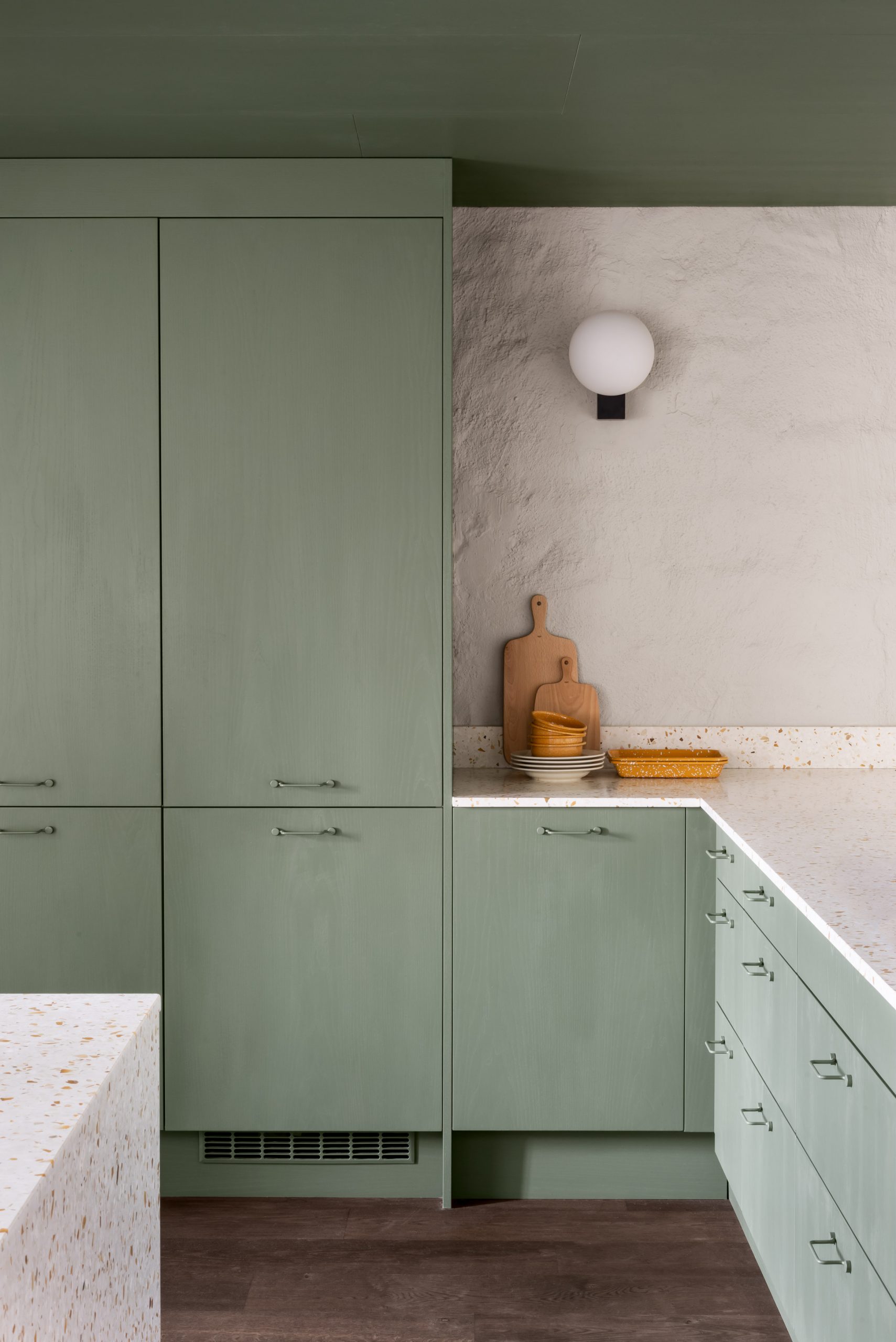
The Mantelpiece Loft, Stockholm, Sweden, by Note Design Studio
Note Design Studio painted furniture in green and pink throughout The Mantelpiece Loft to stand out against its white walls.
Sage green was used for one of the staircases and a bedroom, as well as the kitchen cabinets that were paired with contrasting countertops of terrazzo flecked with orange stone.
Find out more about The Mantelpiece Loft ›
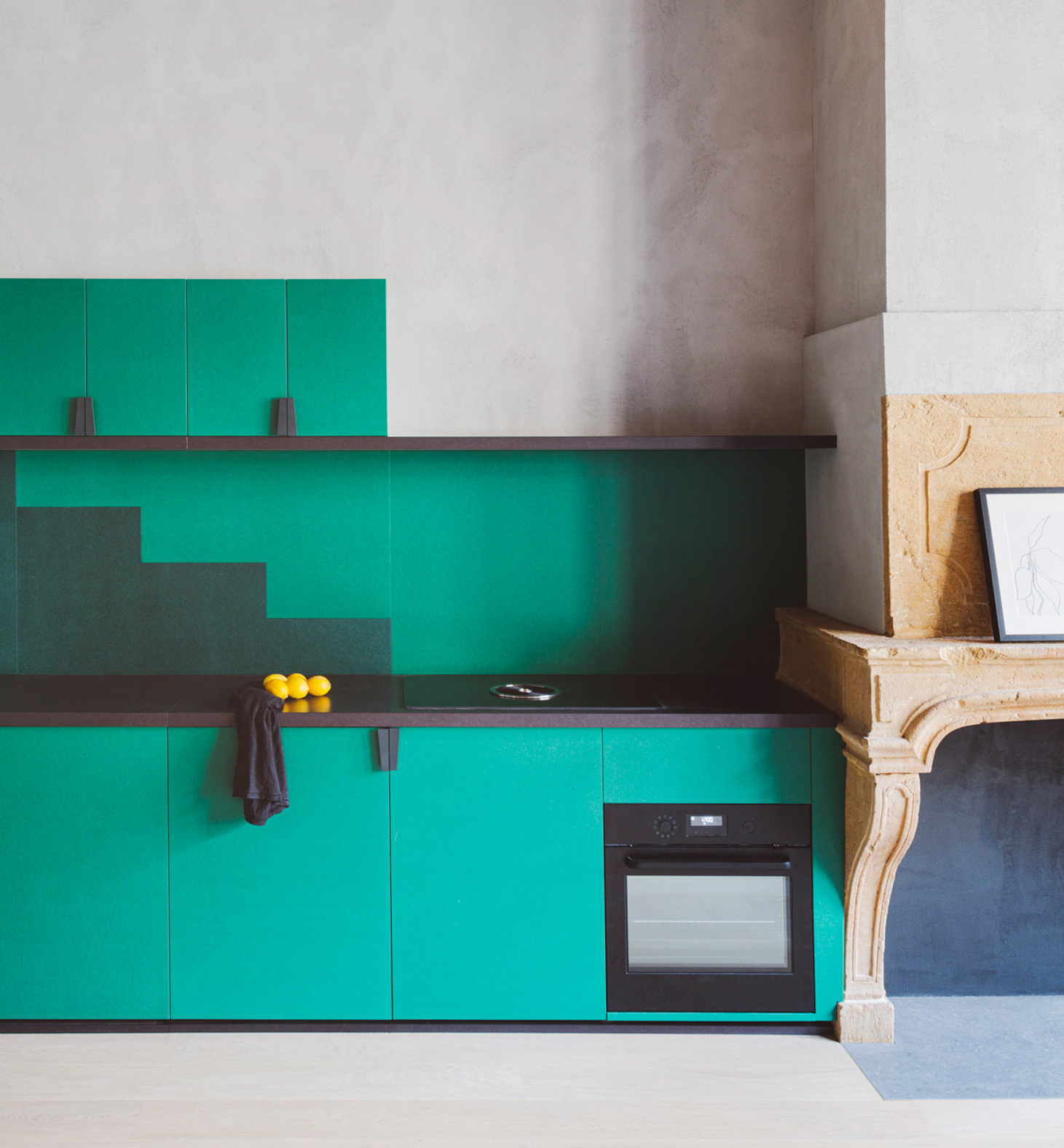
Apartment XVII, Lyon, France, by Studio Razavi
Studio Razavi combined pale-grey plaster, a light wooden floor, and sea-green cabinets in this renovation of an apartment in a Renaissance-era building in the historic Vieux Lyon neighborhood of Lyon in France.
The green kitchen cabinetry has a matching splashback with a stepped silhouette.
Find out more about Apartment XVII ›
Casa Mille apartment, Turin, Italy, by Fabio Fantolino
Italian architect Fabio Fantolino used pops of green and petrol blue throughout the interior of this apartment in Turin that he designed for himself.
In the herringbone-floored kitchen, sea-green cabinetry is paired with copper handles.
Find out more about Casa Mille ›
House extension, Sheffield, UK, by From Works
The bespoke kitchen of this house in Sheffield was designed to incorporate the materials and colors of moss-covered rocks found in the nearby Peak District.
It combines green-stained plywood with grey fossil limestone worktops and splashback sourced from a Derbyshire quarry.
Find out more about Sheffield house extension ›
Waterfront Nikis Apartment, Thessaloniki, Greece, by Stamatios Giannikis
Architect Stamatios Giannikis used color-blocked walls painted in flamingo pink, azure blue, and pastel green to define the different rooms in this seaside apartment in Greece.
The green chosen for the kitchen cabinets and walls was designed to be in sharp contrast with the apartment's original geometric red and black cement-tile flooring.
Find out more about Waterfront Nikis Apartment ›
Apartment on a Mint Floor, Porto, Portugal, Fala Atelier
As the name suggests, Fala Atelier created a mint-green floor from epoxy resin throughout this two-bedroom apartment in Porto, Portugal.
To complement the floor, the apartment's kitchen unit doors were colored two subtly different shades of turquoise.
Find out more about Apartment on a Mint Floor ›
Parisian apartment, Paris, France, by Atelier Sagitta
French practice Atelier Sagitta added an almost entirely green kitchen to this previously characterless apartment in Paris.
The emerald-green walls and cabinets, combined with grooved oak cupboards made by a local cabinet maker, make the kitchen the focal point of the apartment.
Find out more about Paris Apartment ›
